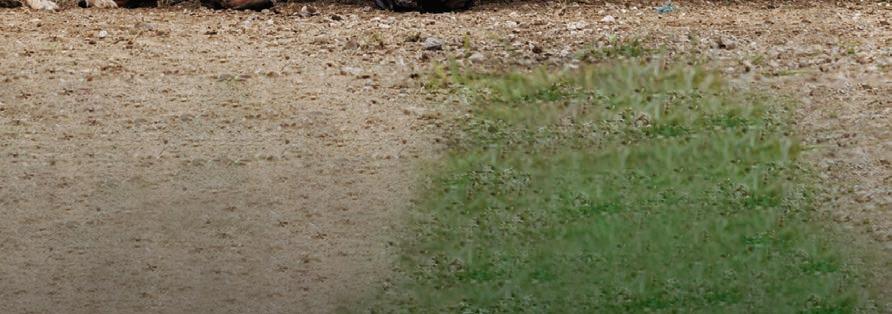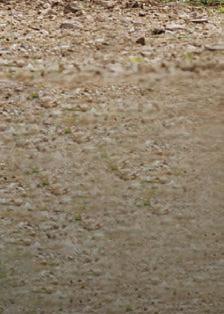




















The
Phone: 0800 466 793 Email: info@integrity.nz
Postal Address: PO Box 474, Dargaville Physical Address: 107 River Road, Dargaville
Editor: Deb Wright 021 639 696 deb.wright@integrity.nz
Journalists: Ann van Engelen | Andy Bryenton | Amy Fifita | Paul Campbell
Advertising: Braxton Epere 027 343 2636
Production: Gavin Bainbridge | Anna Fredericksen | Kelsey Harrison | Liz Clark
Accounts: accounts@integrity.nz
Distribution: Laurie Willetts Printed by: NZME
Website: farminglifestyles.co.nz

Purrrfect For Cats
Cosy, roomy accommodation
Specially designed outside areas
Loads of cuddles
Come and see us
Just off State Highway 1
70 Moirs Hill Road, RD3, Warkworth 09 425 9111
Email: info@barndale.co.nz
www.barndale.co.nz
There are no substitutes when it comes to Grandpas Feeders. If you aren’t satisfied in both the workmanship and the effectiveness, we will refund your purchase price in full, up to 24 months following purchase.


Stop
M: 027 276 9794 | 027 497 6021 www.grandpasfeeders.co.nz
by Paul CampbellWith prize cattle on show at the Northland Field Days, a look back at local history provides an insight into the fact that forestry and cattle are indelibly linked in the region’s history from when Captain Thomas Stewart settled at Ngunguru and raised Devons.


Bullock teams played a vital role in the timber industry in the early development of Northland. Devons were a popular choice for leaders because of their intelligence, hauling heavy kauri logs from the bush to the mills. They were also vital to the regional economy in opening up farmland.
The Smith family, which settled large tracts at the head of the Kaipara harbour were Devon pioneers who also branched out in developing what’s regarded as the genesis of today’s Northland Hereford stock.
From a New Zealand Farmer’s Weekly in 1937, an account traces part of the Smith stud history. ‘An interesting story lies behind the establishment of the pure breed North Devon herds owned by Mr G Smith of Matakohe. It is a tale of almost insuperable obstacles and an effort to keep the strain pure and have a high standard. The founding of the herd dates back when the north was very sparsely settled and undeveloped territory with no transport facilities other than by water and bullock tracks.
‘The first of the Devons was imported from England and landed at the Bay of Islands consisting of a bull and 20 cows. The resulting stock was afterwards purchased by Mr Edward Coates, the father of the late prime minister Joseph Gordon Coates, and a little later, they’d changed hands and became the property of Mr G Smith.
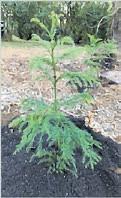

‘In 1908, Mr Smith visited the Sydney Royal Show and purchased the reserve champion Hereford bull Myrtle Boy and the champion cow Coquette 48 and also six heifers. All these cattle have now been prizewinners, the bull being the most, with almost enough ribbons to make him a cover. Mr Smith reports it was hard to make the purchase, and it was only after much argument in which he painted a vivid picture of a 100-mile trip through the bush to catch a boat, a trip down the Wairoa River in dense fog in which they ran aground and finally a sea voyage to Sydney for the purpose of buying that particular animal that did a deal. The price was the only thing not discussed, and Mr Smith did not know the bull had cost him 300 guineas until he was back in New Zealand.
The Smith stud is prominently represented over the earliest part of the last century. Hereford cattle from farms in Matakohe and Ruawai were selected for a shipment of 1,200 animals organised by the World Bank to upgrade herds in Chile.
Further evidence of Smith stock excellence came from the New Zealand Herald correspondent, who recorded on October 8 1952, that ‘believed to equal any price paid in Northland, a top price of 140 guineas was paid for a two-year-old bull at Ruawai at the annual Hereford sale conducted by Wright Stevenson on behalf of Mr GW Smith.’
Ready to plant now
Deep rooted for fast establishment
Northland grown 1 year old trees
Tel: 027 449 5573
https://www.franklinorchard.co.nz
Email: franklinorchard@outlook.com

Northland shearer Toa Henderson was quickly back on the horse as he successfully defended the Kumeu Shears Open title a week after an early end to the dream of winning the Golden Shears Open in Masterton.
He was right back to his domineering best, with the best points all-around on time and quality to beat runner-up Mark Grainger of Te Kuiti by almost four points, with close to half a point, then to Jack Fagan, also of Te Kuiti, in third place.
Henderson is claiming his 11th open title of the season, and his ninth in seven weeks, as the focus starts to zero in on the April 4–6 New Zealand Shears in Te Kuiti.
The wind of change from the south at the Masterton event saw Smith out with injury while Henderson was unexpectedly eliminated in the quarterfinals. The pair and Samuels were quoted from the outset by the TAB as the most likely to win.
The winner of the New Zealand Shears Open final in Te Kuiti last April and a member of the New Zealand team at the world championships in Scotland two months later, Samuels was second in the race. He was the only shearer to get within a sheep of miracle-man and Wairarapa shearer David Buick, who won the final in 16m 16.064s, one of the quicker times in the event’s 62 years.
It was just two-and-a-half years after Buick was so badly injured in an accident on his Pongaroa farm the prognosis was that he might not even walk again.
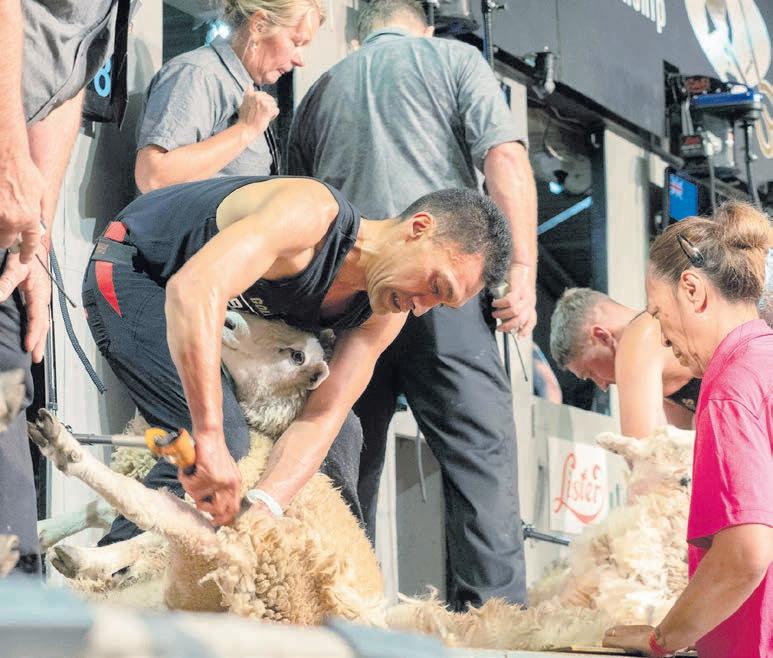
This year’s Golden Shears winner, Leon
Ultimately, it was a Southland onetwo, with 40-year-old Samuels, originally from Mangakino in the Central North Island but based in Southland or Australia for many years. With only one previous Golden Shears Open final


beforehand, coming third in 2020, winning by 1,253pts from among those in the crowd of about 1,000 was Alexandra great Brian ‘Snow’ Quinn, who won the Golden Shears Open title six times between 1965 and 1972.

• Offal & Hide disposal by arrangement (extra fee).
• All beasts weighed onsite and all meat returned weighed back to you.
• All beasts vac packed and hung on the bone minimum of 7 days.
• Operating for 22 years.
• We know our job well.
- ANDREW & SOMMAI HUDSON -
Surgery: 11 Hood Street, Wellsford 0900 Ph: 09 423 7213
e: info@drhudshomekill.co.nz
w: www.drhudshomekill.co.nz


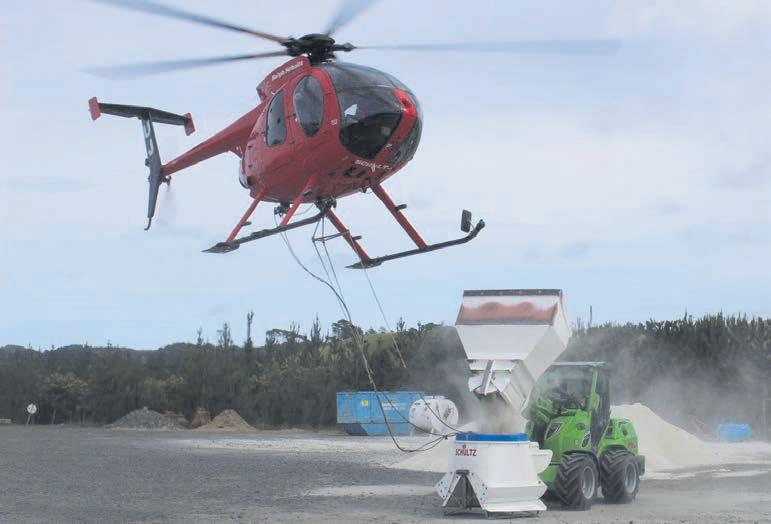







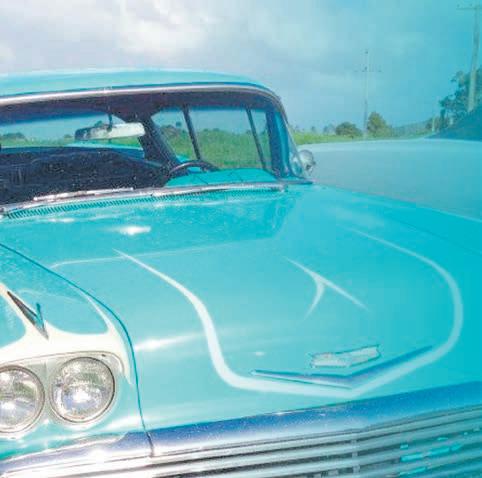

As a young child, Phil Paikea grew up around abuse and, as a result, became a perpetrator of family violence himself. After years in gangs and living a negative life, he made the decision to turn his life around for the good and protect his family. Phil now manages the Safe Man Safe Family organisation in Ruakākā and is proud to see other men work on their life trauma and create a more positive life for themselves and their families.
“I worked on the It’s not OK campaign for eight years with Vic Tamati, who was the face of the campaign,” says Phil.
“When the contract ended, Vic and I set up a programme for men. We called it Safe Man Safe Family. Our saying is, ‘If the man is safe, our family is safe. If our family is safe, our community is safe.




 BY ANN VAN ENGELEN
BY ANN VAN ENGELEN





If our community is safe, our society is safe, and if our society is safe, our nation is safe’.
“I was born in a little place in Helensville and have Irish and Māori roots. My grandfather was a full-blooded Irishman, so I got the best of both worlds. I’m comfortable in my Irishness and in my Māoriness — that’s what makes us unique.
“When I was young, the pubs closed at 6pm, and dads knocked off work at 5pm, and a lot of alcohol was consumed. A lot of men never had good role models and were brought up in violent environments. My father was abusive and angry on alcohol. It wasn’t good, so I ran away from home and got a job.
“After all that, I still loved him but said I’d never treat my son like I was


Phil Paikea moved to Ruakākā with his wife Rowena and family some 38 years ago and now manages the Safe Man Safe Family initiative as he advocates for men to turn their lives around to the positive.
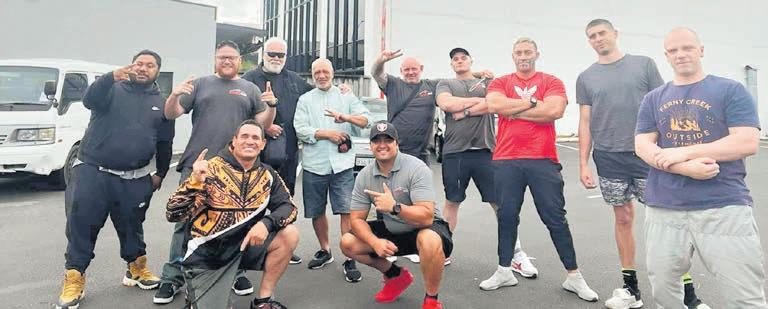
treated. I became a gang member and, unfortunately, because I was a victim of abuse, I became a perpetrator of family violence.
“I met my wife Rowena when she was 17 years old. She helped me to change my ways, and we’ve been together for 44 years now, and we’re still in love.





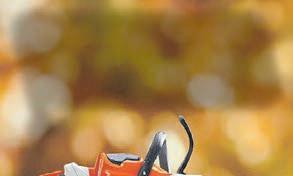





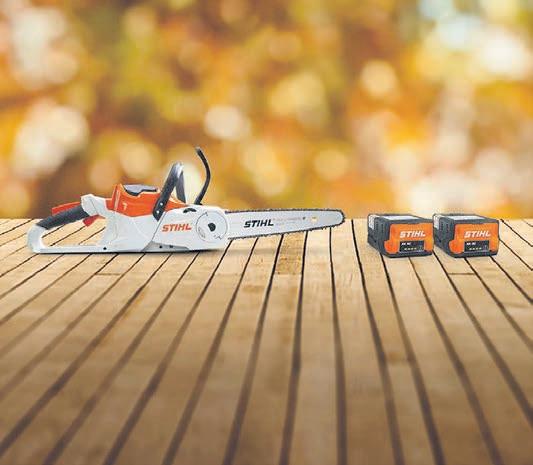

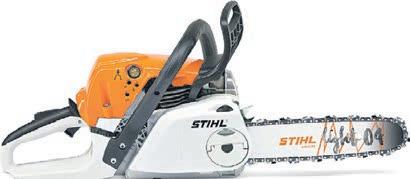

Phil and Rowena have been married for 44 years and are still very much in love
“We moved to Ruakākā 35 years ago and have five daughters and a son. When we moved here, I made major changes to my life. Rowena met with a pastor, and he took her to hear some former gang members speak in Whangārei, and I followed a year later.
“My mother used to take us to church when we were young, but I had given up on it. Rowena and I learned a lot in the church space, and I gave everything negative up and turned my life inside out, upside down and right side up.
“I found out early that I had to communicate because women like talking. I also noticed when they have problems,
they start things like knitting clubs and Women’s Refuge, but men don’t have that.
“Working on the It’s Not OK campaign alongside Vic was an excellent opportunity. Vic and I travelled the length and breadth of Aotearoa together.
“We met amazing people like TV presenter Mike McRoberts and rubbed shoulders with gangsters, drug addicts, alcoholics and ordinary people out on the street going about their business.
“We spoke in schools, universities, workplaces, prisons, police stations, probation offices and gang pads.”
Phil now manages a men’s centre at Ruakākā and facilitates men’s groups.

“I also travel the country and speak on our mahi at Safe Man Safe Family. We started it because we saw a need to have men’s services available.
“Our only counsellor when we got into trouble was to head to the pub and the barman counselled us. We’d go home, and the wife, kids, cat and dog got it.
“Now, having put the past in our past, where it belongs, my focus is caring for our family. Safe Man Safe Family is peer-led and
professionally supported. We make the men safe. I first went to a men’s programme in the 1990s to support a man dealing with anger.
“I told him I knew where to take him for help, but he was shy and asked if I could go in with him for the first session. The facilitator said I couldn’t sit in the group. I had to do the 20 weeks, so I did.”
Read more of the Safe Man Safe Family story next month. To contact Safe Man Safe Family call 0800 7233 4357.
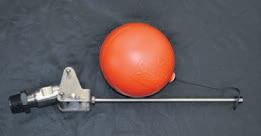
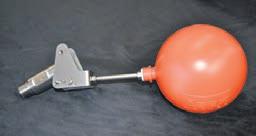
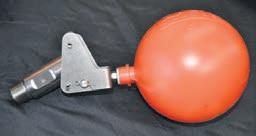

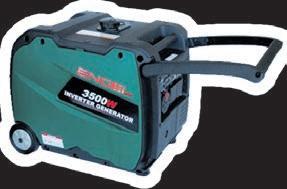
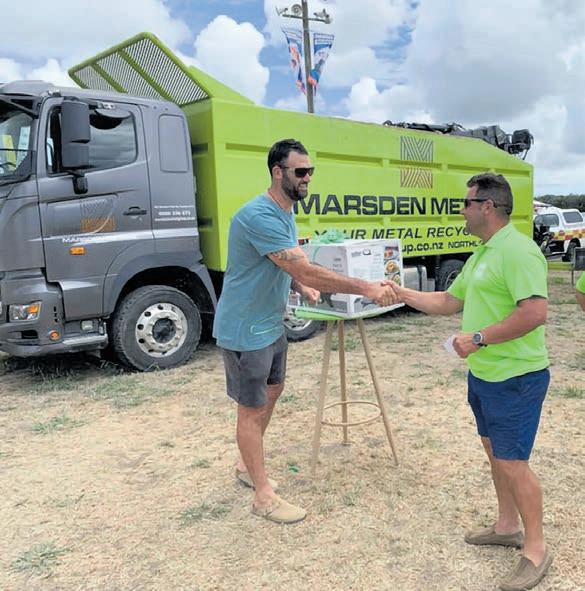

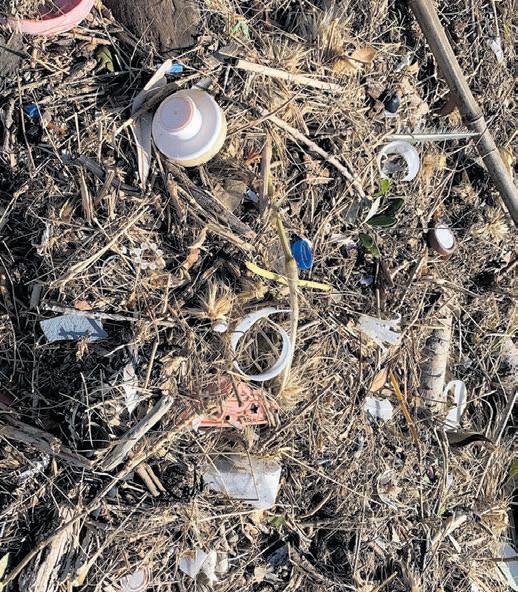
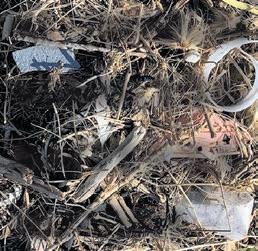

 BY PAUL CAMPBELL
BY PAUL CAMPBELL
Once again remedial work is underway on State Highway One over the closed Brynderwyns route into Northland with traffic diverted on secondary routes that have restrictions consuming huge amounts of time and money to cope with the increased traffic flows.
The tortuous road over the heights between Kaiwaka and Waipu first began in the mid-1930s and has taken more than its fair share of attention ever since, particularly as traffic has grown apace.
With the latest route disruption has come a real sense of deja vu and renewed calls for a new route into Northland, the Land Transport Agency set aside more than $60 million for the current repairs, but even that is not expected to keep the highway open long-term.
“It’s essential that we fix the current road, so it’s going to hang in there for the next 7 to 10 years. In the meantime, we’ve got to work out where to put a new fourlane route around the Brynderwyns,” says Northland National MP, Grant McCullum.
“It’s a top priority. We haven’t got a specific timeline, but are racing against the clock given the current road.”
Engineers give the current work a seven-year life. Still, it is just another shaky milestone on a route into Northland’s economic heartland that has always lacked any stability. One only has to look back a decade when then NZ First MP Ron Marks asked the Minister of Transport, then Simon Bridges: “How much was the original funding by the New Zealand Transport Agency to complete the Brynderwyn Hills Road improvements, and how much is it now?”
Bridges replied: “The original funding was $16 million, but the total cost now is $20 million, with a benefit-cost ratio of two. I am advised that the increased cost is mainly due to two large slips and
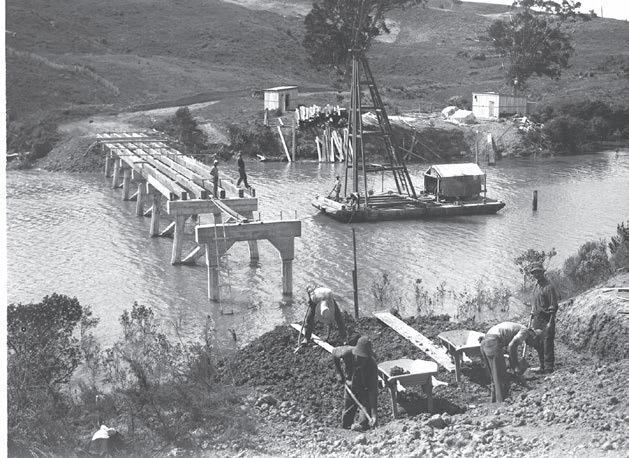
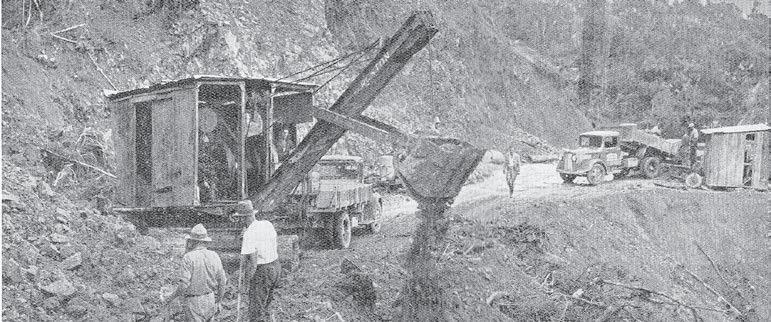
Construction underway on the Brynderwyns route in the mid-1930s a significant weather event in December 2014, which required two large new retaining walls. I am sure the local member will welcome this additional, albeit, in the
scheme of things, relatively small, spend in Northland to make an important stretch of road more resilient, reliable, and, most importantly, safe.” Deja vu again.





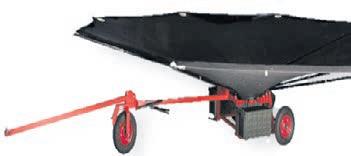


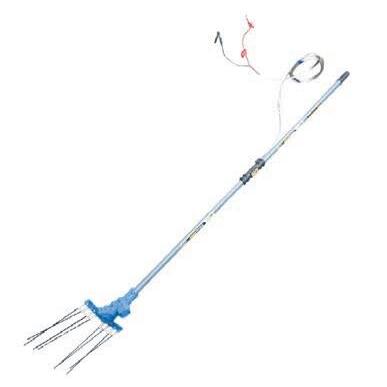



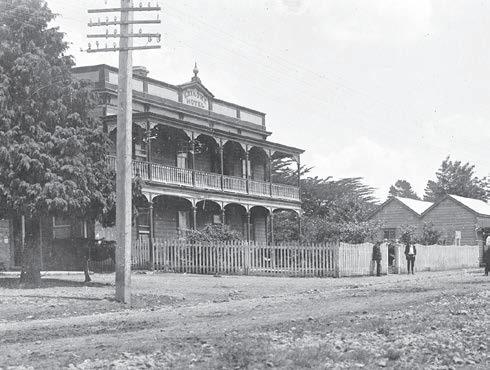

Kaikohe got a new metalled road through the town in 1918
The saga of road works and Northland’s experience could fill volumes. On September 17 2021 Waka Kotahi announced $751 million of investment in Northland’s unfortunate land transport network ‘over the next three years’ to improve safety, keep communities connected and support economic opportunities.
The overriding problem that is common knowledge is the weather has a mind of its own, and so does geography. Plans, projections and budgets are all very well.
From the days when the Brynderwyns route was a gravel road with the first model T Ford making the trip, it has been troublesome.
In 1961 there were just 536 kilometres of sealed road in Northland, and the region’s proportion of unsealed roads is still high compared with the rest of New Zealand. With only a third of Northland’s roads sealed, the ‘roadless north’ is a popular refrain. Even back in 1917, a
local businessman managed to gather a massive 25 MPs, a huge entourage of business leaders and accompanying journalists all the way from Auckland to Hokianga to demonstrate the parlous state of infrastructure.
Of course, the weather had its say. Heavy rains led to ropes and spades being wielded to dig their vehicles out of the mud. In the hundred years since, there have been some improvements, but not with the urgency that was expressed in 1917. Bad weather turned many roads into bogs from the word go. Even if a cartwheel went on the soft edge, the lot could tip over. Before motors, draught horses such as Clydesdales with their large hooves were favoured. Even into the 1960s motorists carried tyre chains. Bridges, of course, were very thin on the ground and fords were the usual crossing points in the 1920s and 1930s.
Road surfaces varied. The North Island hill country and deep river valleys

Early Northland rural roads were a task for
were especially difficult, and road cuttings destabilised slopes and led to slips. Once roads were built, they had to be maintained. Alternative routes to Northland ready for the Brynderwyn Hills closure have had a huge boost of remedial work to prepare with engineers crossing their fingers against autumn rains.
“Roading crews have completed around 300 repairs, from resealing and rehabilitation,” said Northland Transportation Alliance maintenance and operations manager Bernard Petersen.
That has included improving bridge approaches, road signage, line marking, drainage improvements, under slips, road subsidence, road realignments, vegetation, shoulder widening and water table maintenance.
“The collaboration between 22 Kaipara and Whangārei-based contractors to get the job done has been superb because they recognise how critically important this is for the region to get our routes
into Northland in good shape,” says Mr Petersen.
“The majority are small to medium enterprise operations, many of them Northland-owned businesses working under the guidance of our current road maintenance contractors.
“Much of the work the crews have completed was not able to be done last winter due to chronic weather that kept hitting Northland. However, they have made the most of the dry spell in recent times.”
Finally, a glance at Niwa’s outlook for February to April, as the Brynderwyns get yet another makeover, predicts rainfall is about “equally likely to be near normal or below normal in all other regions outside the South Island.” If true to forecast, Easter holiday-makers will have at least a stop-go one-lane passage over the hills for several days over the holiday. In Northland roading terms, it’s another chapter in a long, unfortunate saga.


We get it, forking out for a new 4x4 right now is a royal pain in the … well, you know! So you want to know it’ll see you right for the next few years without costing you more. With prices from just $13,522 + GST, its 3-year Factory Warranty and this awesome finance offer, the cost of owning a Suzuki KingQuad has never been better. So get down to CA Motorcycles today and get the royal treatment.


 BY AMY FIFITA
BY AMY FIFITA
“Igrew up in the South Hokianga. I was born in Rawene, and I grew up on a dairy farm in Ōtaua. My parents still live there, and I have whakapapa connections to Kaikohe. I spent all of my childhood and schooling years there,” says Patricia.
“My parents live on the same farm, but now they are beef farming. I never got bored on the farm because there were always opportunities to do something. There were rivers there, and we would often play in them, and I enjoyed riding horses.
“When I was about nine years old, I started riding horses. I competed in all of the Northland agricultural and pastoral










shows. I spent most of my summer weekends at competitions, and when I went to university, I had to sell them.
“It was a very cool upbringing, and I loved it. Through my upbringing and always spending time outdoors and in the rivers where I grew up, I developed a passion for water and the environment.
“At school, I had a passionate teacher called Mr A. He taught us the Education for Sustainability curriculum. We used to go out on our school farm at Northland College to plant trees or do other outdoor activities. He inspired me to study environmental science after I left school.”
Patricia also studied for a bachelor of earth science at the University of
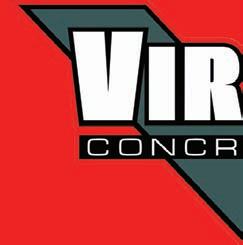
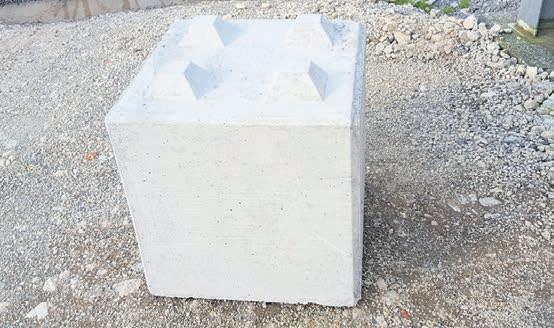


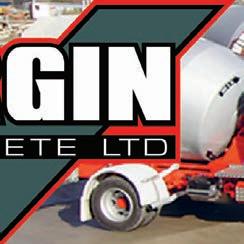
Length: 600mm
Width: 600mm
Height: 600mm

/ (09) 435 5043
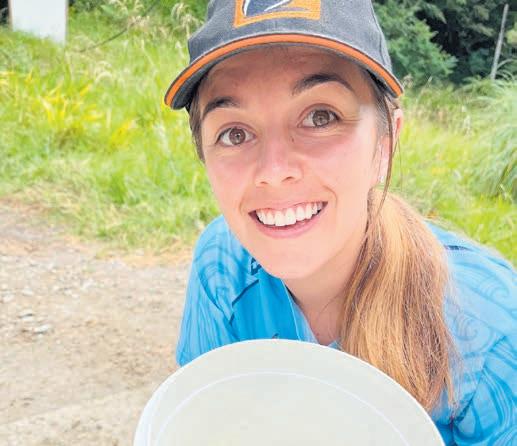
Weight Approx: 490kg
Length: 1500mm
Width: 600mm
Height: 600mm
Weight Approx: 1260kg
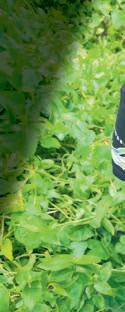
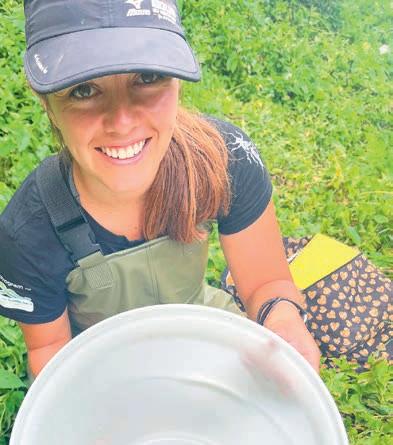



Patricia and her colleague Nic Naysmith monitoring īnanga (freshwater fish) spawning on the Pohuenui River in Waipu Auckland. She completed her master’s degree in environmental science, mainly focussing on freshwater ecology. With her qualifications, she moved to Mangawhai to work for the Te Uri O Hau
Settlement Trust environmental team. She then began working part-time at the Mountains to Sea Conservation Trust’s Whitebait Connection and is now the national coordinator.


Length: 900mm
Width: 600mm
Height: 600mm
Weight Approx: 750kg
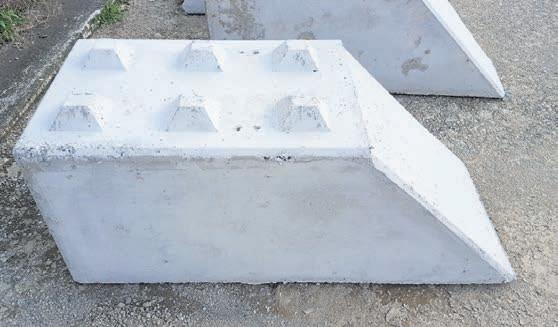
Waipu local Patricia Clark has always had a passion for the water and the environment and shares it with communities across Northland. 10
Length: 900/1500mm
Width: 600mm
Height: 600mm
Weight Approx: 1000kg
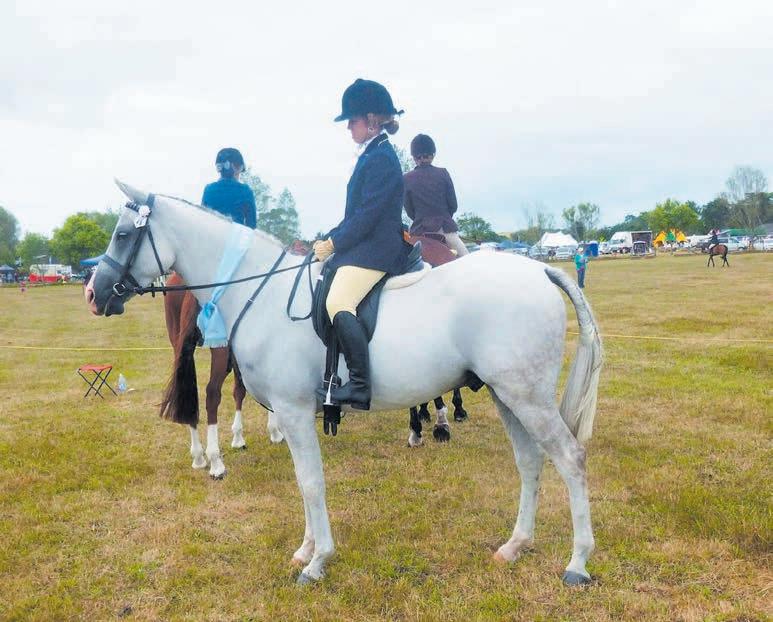
Patricia Clark began riding horses when she was about nine years old and says she would love to own a lifestyle block so she can own horses again
“I enjoy working in the community and with students. I love taking them into the field and showing them what creatures live in their local freshwater environments. It is inspiring to see, and I love teaching them about the importance of freshwater biodiversity and some of the challenges the environment faces.”
“I have always been involved in agriculture. I work with a lot with farmers doing catchment groups and teaching them about water monitoring and river access for our school field trips and programmes.
“We do some awesome work with farmers, Fonterra, the Department of Conservation and many other agricultural organisations through our Northland Īnanga (freshwater fish) Spawning Habitat Restoration Project (NISHRP). They give us access to the rivers and streams the īnanga are spawning on.” The NISHRP began in 2022 and will run until 2025. With the knowledge collected from 25 Northland waterways, WBC aims to create a network with local landowners, iwi, groups and agencies to protect īnanga and restore habitats.
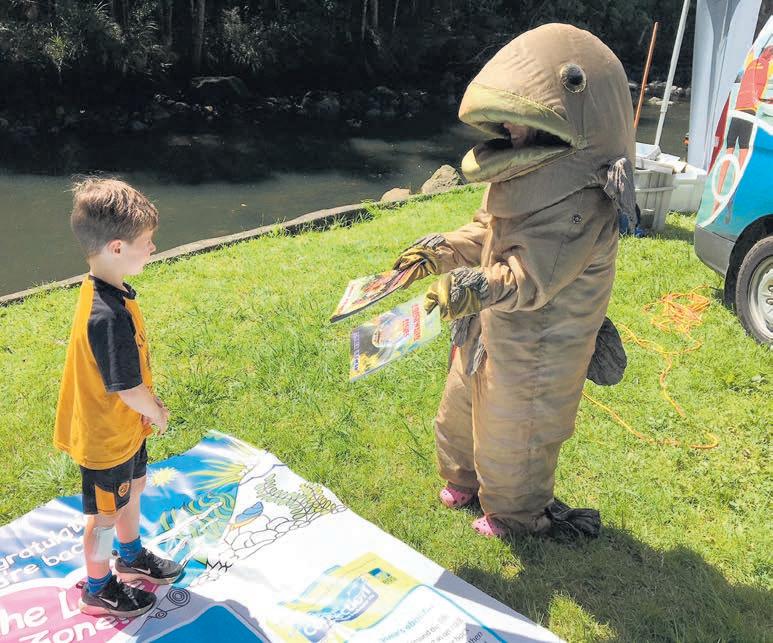
Patricia says she enjoys sharing her love for water species with students and the community
Patricia also participated in half marathons and completed her first full marathon in 2023. She shares her passion for ecology with hiking and gardening, too.
“I adore being outside. My aspiration through my work is for future generations to have the opportunity to experience their environments and experience the same things. I want them to be inspired to take action and improve our environment.
“Growing up, I used to do a lot of eeling. I never knew that there was a longfin and
shortfin eel — I thought they were the same. I enjoyed catching the biggest ones and eating them.
“Now, I know that the longfin eel is a threatened species, and it can take up to 100-plus years before they migrate and spawn near Tonga. I enjoy sharing that with students to create awareness about the longfin eel. Eels are my favourite freshwater fish, and I want them to still be around for the future. One day, I would also love to own a lifestyle block and own horses again.”


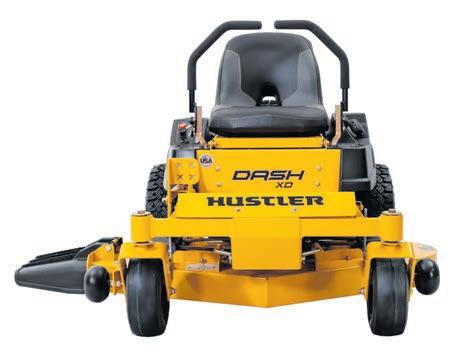
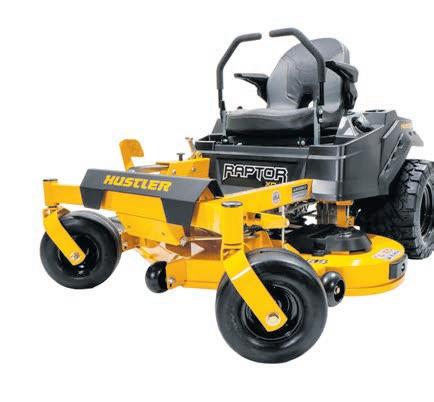

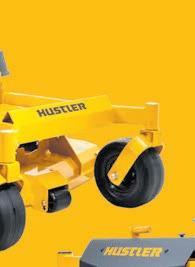

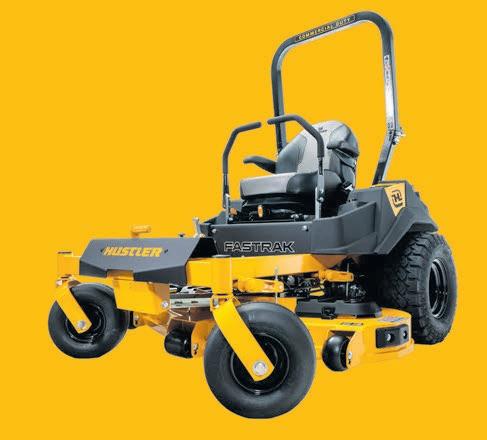

Jeremy and Kate Mounter were named winners of the 2024 Northland Share Farmer of the Year with Kieran McCahon taking away the 2024 Northland Dairy Manager of the Year, and Quinn Hewlett becoming the region’s Dairy Trainee of the Year.
Jeremy and Kate 50/50 sharemilk 330 cows on Moss and Margaret Pepper’s 131ha Kaeo property. They say they’re proud of their high-quality and efficient milk production and remain dedicated to ongoing improvements to ensure their longterm competitiveness in the global market.
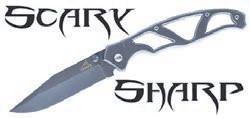
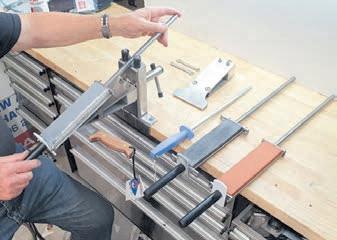

“We’ve been on Pepper Farm for three and a half seasons and spent the first two seasons shaping the farm into our desired vision,” they say.
“We’ve surrounded ourselves with a community of exceptional individuals, and wanted to showcase the outstanding efforts of our whole team and all the experts we collaborate with.”
Runners-up in the Northland Share Farmer of the Year category, presented by Fonterra, were Jordan and Samantha Brown, who are 50/50 sharemilking on McIntyre Farms Ltd 120ha farm at Okaihau, milking 240 cows.
Kieran McCahon is the 2024 Northland Dairy Manager of the Year. He spent two years as a Solutions and Development specialist with DairyNZ.
“After a number of years pushing a pen, I needed a physical outlet,” he says.
“Although farming is often physically demanding with long hours, there is something very fulfilling about a day’s physical work when you can see the results of your efforts.”
Runner-up in the Dairy Manager category was awarded to 25-yearold Courtney West. Courtney is farm manager on Greg Partington and Nicola Murray’s 147ha, 350-cow Tomarata farm. Dyllan Matthews placed third. He is the farm manager on Roger and
Rachel Kidd’s 376ha Te Kōpuru farm, milking 670 cows.
The Northland Dairy Trainee of the Year is 18-year-old Quinn Hewlett, who is a farm assistant for the Rangihamama Omapere Trust’s 560-cow, 219ha property at Kaikohe.
“I started out green and now can pretty much do everything on our farm.”
Quinn has completed PrimaryITO level three agriculture and is currently studying towards level four. He’s excited about the new technology coming through the industry, enjoys the camaraderie with his workmates and cites his ADHD as both a challenge and a strength.
“It’s been an issue, but over time, I have set plans in place to help me. I cope well in high-stress environments, which is helpful at work when things go sideways.”
Runner-up in the Northland Dairy Trainee category was Michaela McCracken who is a farm assistant on Greg and Ingrid McCracken’s 17ha Wellsford property, milking 370 cows.
The Northland Dairy Industry Awards field day will be held at 10.00am on March 26 at 548 Matauri Bay Road, RD1, Kaeo S/N Fonterra 10461, where Jeremy and Kate share milk. Also, presenting at the field day will be Kieran and Quinn. Further details on the winners and the field day can be found at dairyindustryawards.co.nz.
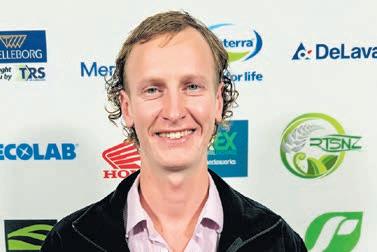
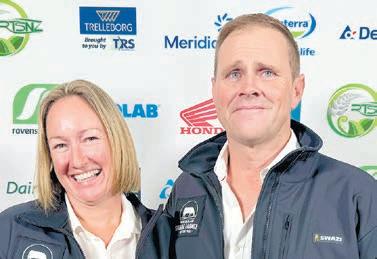
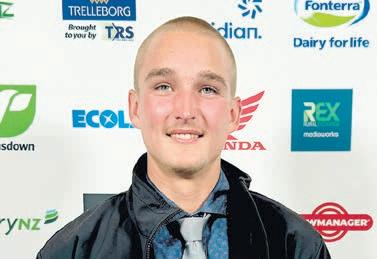




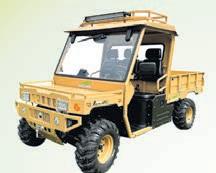
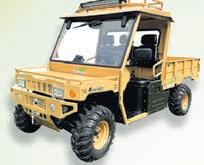

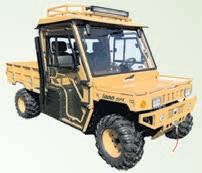
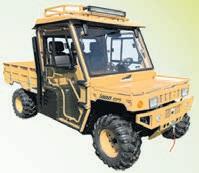
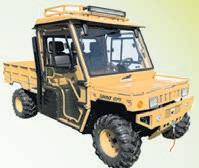





Siobhan O’Malley is a dairy farmer, innovator, businesswoman and community volunteer.

Siobhan is a fine example of the thousands of Kiwi dairy farming women throughout New Zealand who multitask on a daily basis to contribute positively to their communities.
As a high school teacher, president of her children’s gymnastics club, small business owner and sustainability initiatives her family is involved with, Siobhan is kept busy.
“International Women’s Day on March 8 was a great opportunity to celebrate the amazing contribution of rural women across all aspects of Kiwi life,” says DairyNZ general manager Alyce Butler.
“About one-third of dairy farmers are women, and they contribute hugely every day to our sector, communities, local economies, schools, sports and sustainability initiatives.
“The dairy sector is evolving and becoming a more inclusive and diverse workforce with varying needs and wants. We’re developing new ways of working, different milking schedules, varied rosters and new technology, all of which support efficient farm systems and inclusive workplaces.”
Siobhan and fellow dairy farmer Wayne Langford co-founded the Meat the Need charity, which helps feed Kiwis in need so they don’t go hungry.
Farmers throughout the country donate meat and milk, which the charity provides to food banks and other community groups dealing with food poverty in NZ.
“Meat the Need is hugely successful. We’ve achieved more in three years than

we thought we would in 10 years because farmers really got behind it,” says Siobhan.
“I get involved in my community in the things that I believe are really important and that I’m passionate about. By working together in our communities, we achieve so much more.”
Siobhan grew up in Christchurch and graduated with a master’s degree in classical studies. She met her husband Christopher when he was a tour guide in the Abel Tasman and later in Dublin, Ireland. They went dairy farming together after Christopher worked for his brother, who was sharemilking and fell in love with it.
The couple own their own farm and enjoy teaching their children about farming and the environment. They plant native trees on their property, which gives native birds places to rest and feed.
“With farming, I love being the master of my own destiny and the whole family is involved. Our children know more about running a business than I did at 18.”
On the business side, Siobhan and two other farmer friends she met at the Kellogg Rural Leadership course have created luxury knitwear company, Hemprino, an e-commerce start-up. Hemprino is made from hemp fibre and merino wool.
“The hemp fibre strengthens the merino, and the knitwear is soft. It’s biodegradable, which is important to us. We believe everyone should be reducing their environmental footprint where they can.”
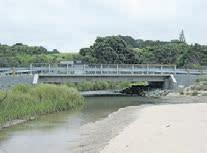
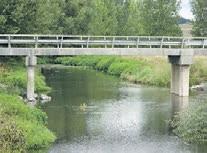


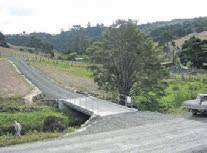 by John Arts
by John Arts
Last month, we saw that magnesium supplements can be very effective for cramps, especially night cramps, and to help restless legs.
Over 300 enzymes, including those needed for muscle contraction, energy metabolism and many others, require magnesium.
As a Nutritional Medicine practitioner, magnesium is one of my most frequently prescribed supplements. Magnesium works quickly on problems, with bene ts obvious within days, especially with night cramps.
Magnesium is critical for cardiovascular function. It helps regulate electrical impulses and helps support normal heart rhythm, especially for those with AF. I have seen those with mild arrhythmia return to normal using targeted magnesium plus appropriate dietary changes. I also use magnesium, alongside naturally fermented co-enzyme Q10, for those on statin drugs to help prevent or reverse the common side effects of low energy, muscle stiffness, pain and cramps.
Magnesium is also helpful when part of a nutrition programme for hypertension. It helps relax the smooth muscle that lines blood vessels thus reducing blood pressure. It does
this because it is a natural calcium channel blocker. When magnesium levels are low, calcium over-stimulates heart muscle cells ( bres), resulting in heart arrythmias. Adding magnesium helps to counteract this.
For hypertension, I like to combine supplemental magnesium with a good multi-antioxidant, multi-mineral, and multi-vitamin complex. This, combined with a diet high in nitrates (especially beetroot), can produce real bene ts.
I prefer chelated magnesium diglycinate combined with naturally extracted magnesium from seaweed. These, combined with rapidly absorbed magnesium citrate mean the supplement can work quickly for fast results. I suggest you avoid once-a-day supplements and look for those that you can vary the dosages depending on your needs.
John Arts (Adv.Dip.Nut.Med) is a nutritional medicine practitioner and founder of Abundant Health Ltd. For questions or advice contact John on 0800 423 559 or email john@ abundant.co.nz. Join his newsletter at abundant.co.nz.




What is Magnesium Triple?
This is a blend of 3 highly bioavailable forms of Magnesium for rapid absorption and better results.
• Marine magnesium 121 mg
• Magnesium Glycinate 240 mg
• Magnesium Citrate 258 mg
get rapid benefits
• It is ideal to help relax sore or tight muscles
• Can help with restful sleep
• To help with PMS related tension
• Helps muscles recover after exercise
• Supports healthy heart rhythm
Nestled along the pristine coastline of Taipa Bay, Taipa Beach Resort stands as a testament to the perfect marriage between tranquillity and adventure.
Boasting a breathtaking seaside location and the distinct advantage of being close to a myriad of tourist attractions, the resort promises an unparalleled vacation experience for the discerning traveller.
From the moment guests step onto our premises, the rhythmic symphony of waves beckons them into a world where serenity meets excitement. Taipa Beach

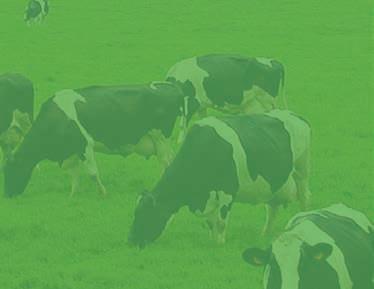


Resort, adorned with lush gardens, invites guests to unwind in the lap of nature’s beauty. Our Beachfront room offers
spectacular
while garden view rooms offer the serenity of a tropical garden view.
What sets this resort apart is its strategic location, acting as a gateway to a plethora of nearby tourist attractions. From Taipa, travellers can explore the rich tapestry scenic beauty. Popular day trips include Cape Reinga Lighthouse, Waitangi Treaty Grounds, Ninety Mile Beach and the Bay of Islands.
For those seeking an adrenaline rush, the resort’s close proximity to wellknown adventure activities ensures an exhilarating experience. Whether you prefer adventure sports or basking in the sun on a pristine beach, it is all within arm’s reach.
Beyond the allure of the destination, the resort’s commitment to exceptional service ensures that every guest feels pampered and well cared for. With an in-house restaurant, bar and cafe, Baywatch, guests can be assured that their every need is catered to. The resort also boasts a conference room, making it the perfect spot for corporate events, parties and weddings.
In essence, Taipa Beach Resort is not just a place to stay; it’s a gateway to a world of exploration and relaxation. The perfect blend of natural beauty and proximity to tourist attractions makes it a prime choice for those seeking a holistic vacation experience.

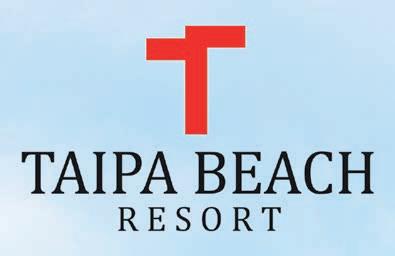


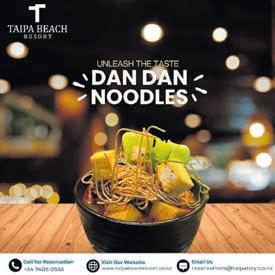

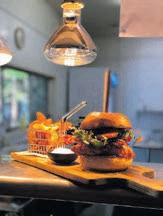





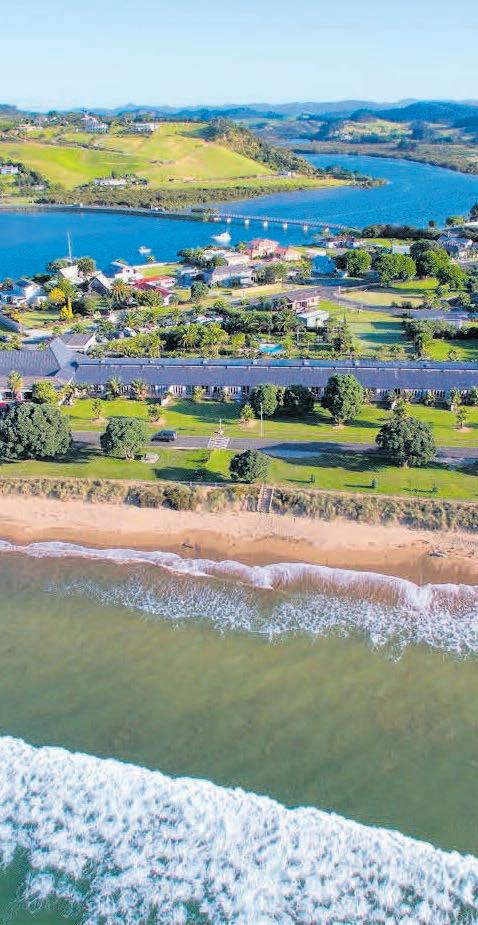

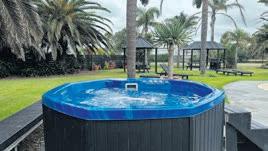









The new comprehensive service will be delivered across the three radio and online streaming networks, including iwi media partner social media platforms.
With three decades of experience in Māori media, Ngāti Hine FM Station Manager Erana Fenton says there has long been a need for a strong and balanced Māori perspective, but too often, that has been lacking or ignored.
“Everything that I have grown up with and learnt, particularly with the likes of Mana Māori Media and Māori radio, has been about giving a sound and reasonable voice to Māoridom.”
The media collaboration is called ‘te kūkupa’, a name gifted to the project by Tautoko FM’s Cyril Chapman, renowned as a messenger and also known as the kererū, kūkū or wood pigeon.
“Like the kūkupa and the noisy beat of its wings, our collaboration aims to deliver a distinctive sound by uniting the strengths, voices and unique perspectives of Ngāti Hine FM, Tautoko FM and Te Hiku Media to create a news service that resonates with the heartbeat of our Te Tai Tokerau communities,” Erana says.
“From the Brynderwyns and pockets of Kaipara right through to Hokianga and Muriwhenua. The physical and community footprint we cover is huge, so I am confident we will grow an even more loyal following and have a significant impact in telling the stories of our people.
“Our aim is to search every corner of Te Tai Tokerau for stories that matter and believe te kūkupa will become a symbol of excellence in regional news coverage,
“By informing our people about important issues, we ignite conversations and debates.”
embodying the shared vision and commitment of Ngāti Hine FM, Tautoko FM and Te Hiku Media.”
Erana believes the collaboration will redefine the landscape of regional media.
“That is because we know news is about storytelling. That means telling the stories of our whānau, hapū and hāpori within and providing a platform for those voices that have largely gone unheard and that is essential to building strong, informed and even more connected hāpori.”
Erana says the regional news team are committed to high-quality, authentic, impartial, unpretentious journalism and responsible reporting but with a Te Tai Tokerau twist.
“By informing our people about important issues, we hope to ignite conversations and debates leading to meaningful action while shaping the way the wider hāpori digest news content and stay connected, engaged and informed about te ao Māori,” says Erana.
“We will be providing regular updates to our audiences as we launch new content and are also on the lookout for local talent to be part of our regional media internships.”

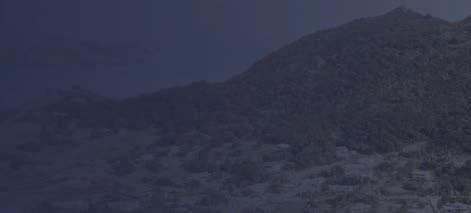


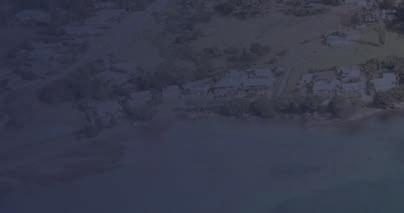




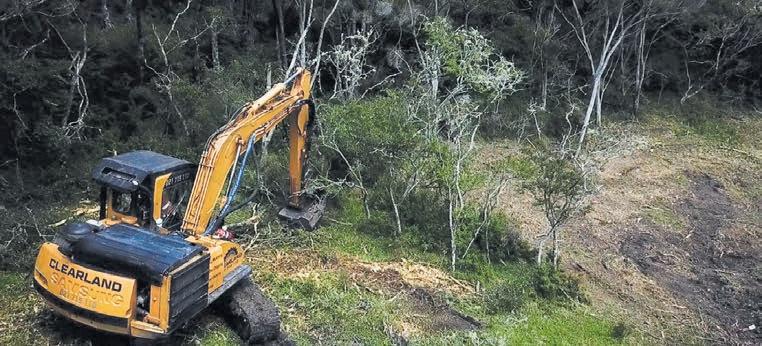


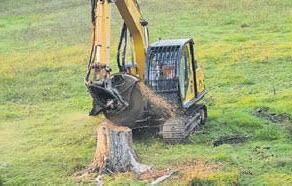
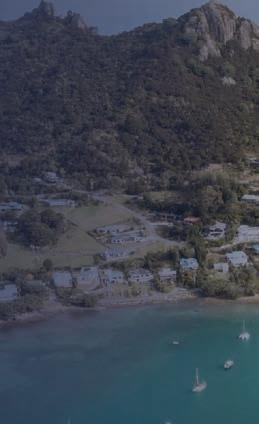


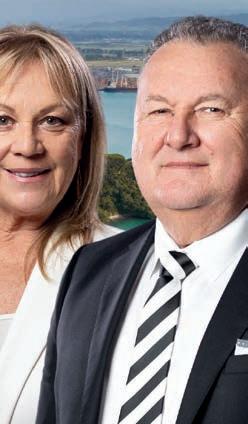



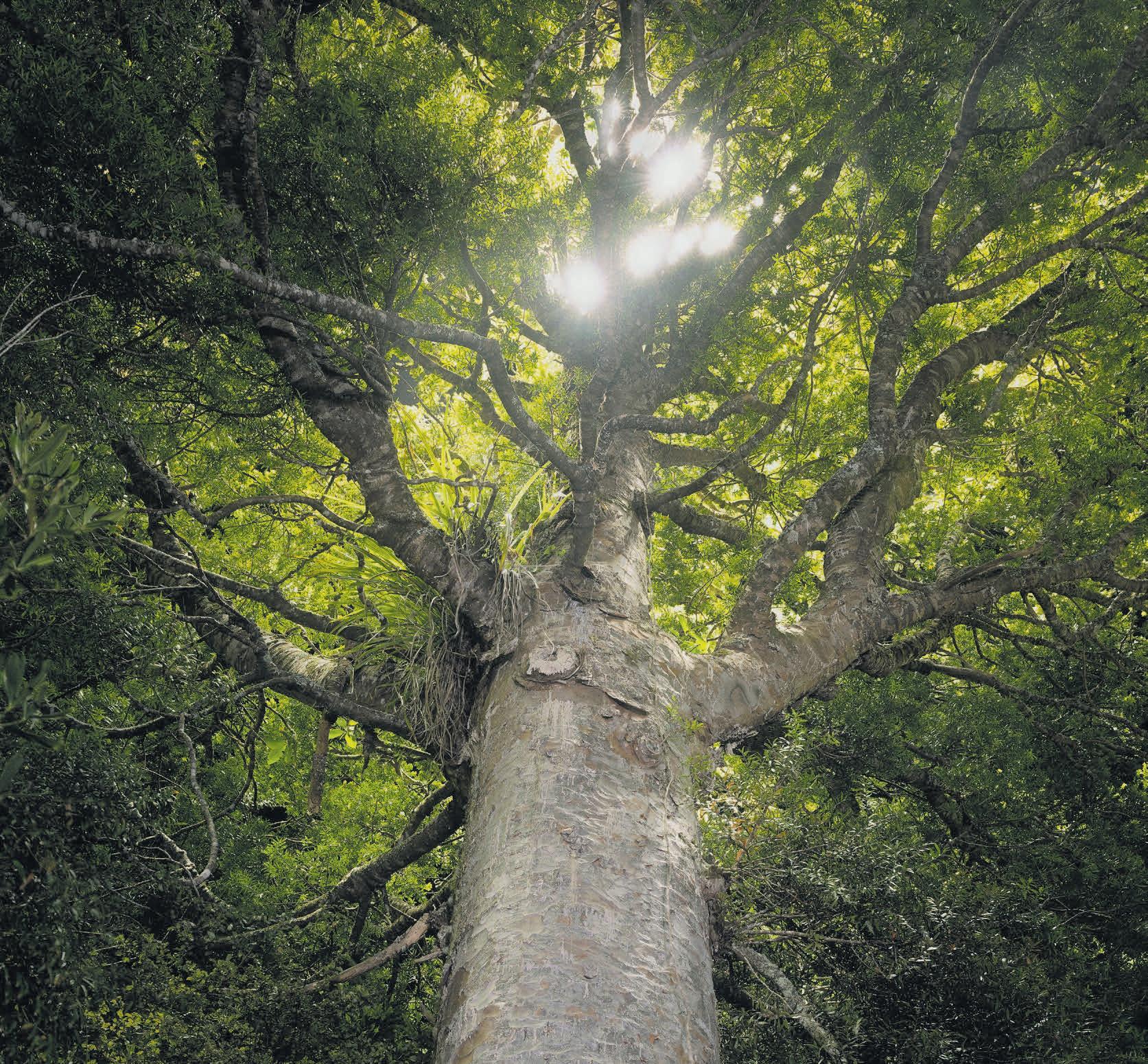
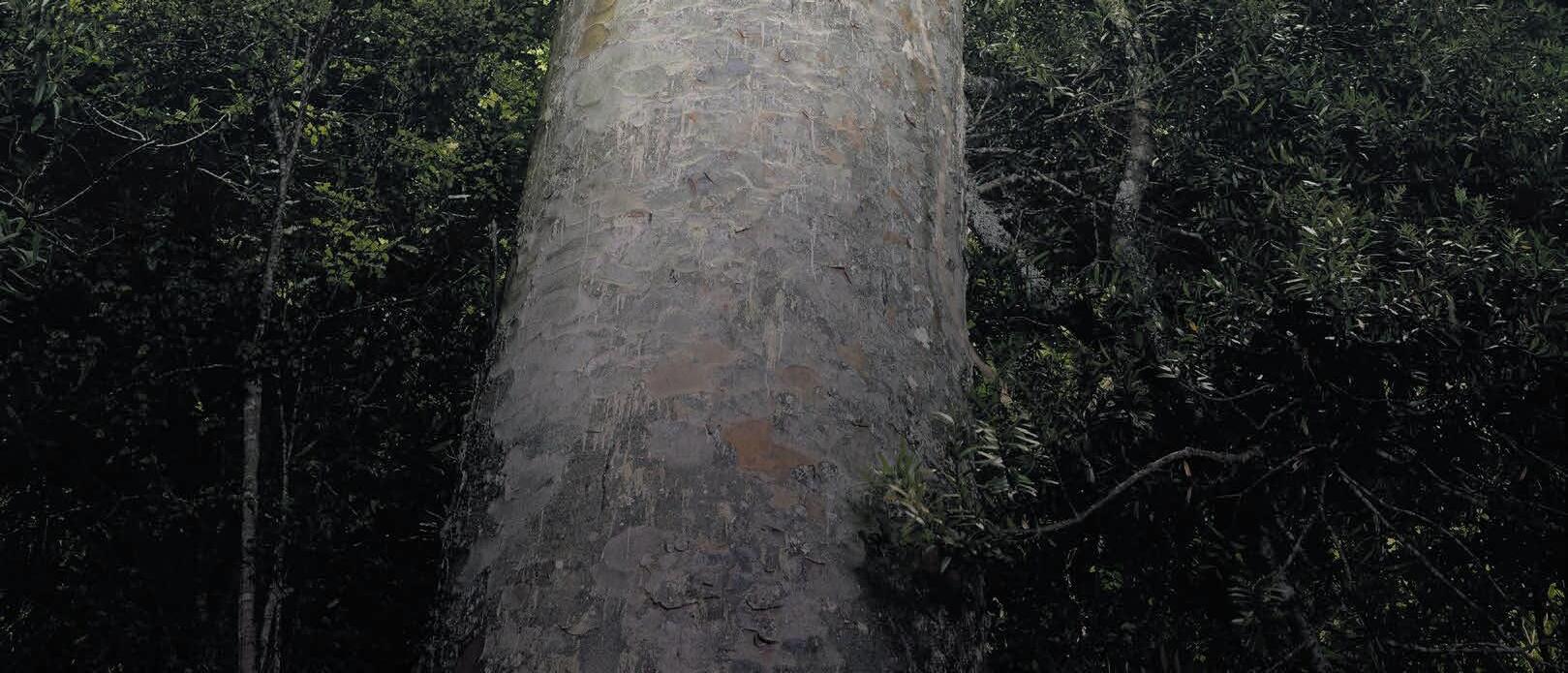
As one of Northland’s most trusted new home providers, EasyBuild Northland is the smart solution for quality, cost-effective new homes. Whether it’s for your own home, a minor or secondary dwelling, farm or worker accommodation or multi-unit property development, EasyBuild has got you covered.
With its wide range of modern homes that are designed to withstand New Zealand’s harsh climate, there’s something to suit everyone. Plus, with a worker accommodation-speci c design housing 12, soon to hit the market, EasyBuild is well positioned to continue to meet the needs of all types of farm or worker accommodation.
EasyBuild’s unique modular construction method means their homes can be built anywhere — if you can walk there, they can build there. The top-quality modular components are prefabricated at the EasyBuild factory and sent to the site in a shipping container. The build is completed on-site by EasyBuild Northland’s experienced local team, who pride themselves on providing outstanding service and communication throughout your build.
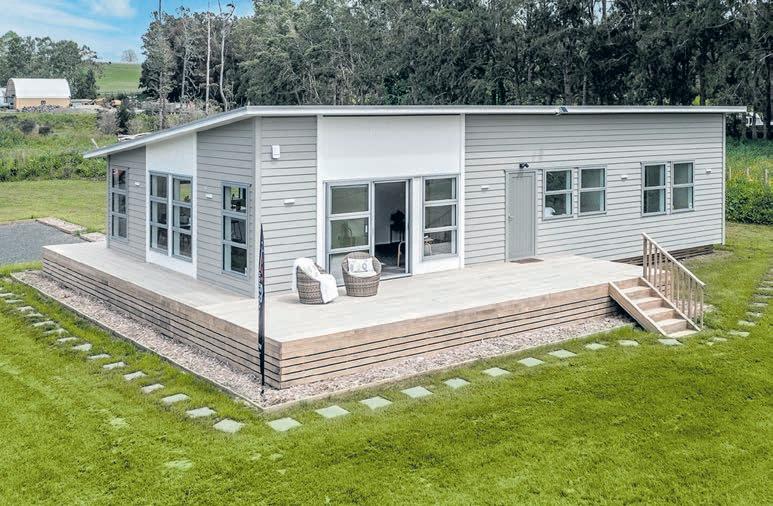
With pre-installed insulation and windows and built using materials that are tried and trusted in the New Zealand market, EasyBuild’s homes can be enclosed on-site in as little as two weeks. It minimises exposure to the elements and reduces disruption to the natural environment. It will
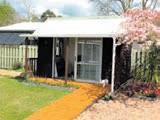
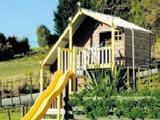
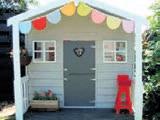
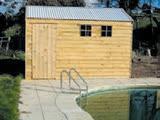


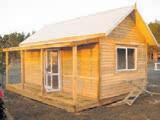
see you, your family, your workers or tenants through many happy decades of warm, comfortable, lowmaintenance living.
For more information, visit easybuild. co.nz, drop into EasyBuild Northland at 120 Dent Street, Whangarei or contact Nicole Whitehead at 021 167 8299.










76% of New Zealanders are concerned about “fake news” and its implications
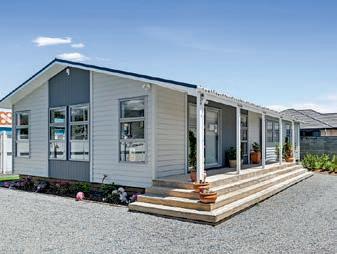




These days, design for new homes spans a range of budgets, from a small cabin in the bush to an expansive mansion on a coastal clifftop overlooking the ocean.
Still, finding the right home design that fits your budget and lifestyle can bring it all together and make a dream a reality.
Always go with a company with a longstanding history of providing quality homes rather than a more recent one. Wellestablished home builders can provide full contractual support and have their own building teams and subcontractors to keep the build process hassle-free.
Working with a home consultant on the layout of your future home is the first step. With the advancement of technology

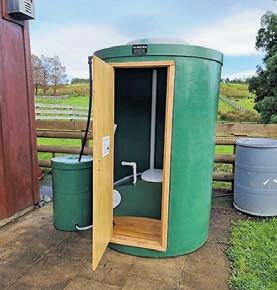
in computer-aided design, a threedimensional plan can be envisioned on the screen. The floor plan can be altered to fit your needs without leaving your chair.
A good consultant will be able to help you with the right interior colour design, lighting, kitchen layout and style, plus all the finer details, such as how it will look on completion. Some companies can even help with finance via a mortgage broker to get the best financial package to cover the land purchase and build. Before signing any contract relating to a land and house package deal, have your legal adviser look it over before paying any initial deposit and committing.
Alternatively, if you’ve already purchased a section or larger site, engaging an architect provides more scope and a unique home to reflect your needs and taste. Talk to your architect about your aspirations and, of course, what your budget is.
Draw a rough sketch of what you think you might like your floor plan to look like.

Will it be a double-storey home or a single level with separate wings, for example? What exterior cladding do you envision, such as cedar or steel weatherboards or even corrugated steel combined with timber, to give a standout statement?
Those ideas can be taken and turned into a concept model rendered in threedimensional colour through a CAD program by your home designer and finetuned to create a residence you can be proud of, large or small.



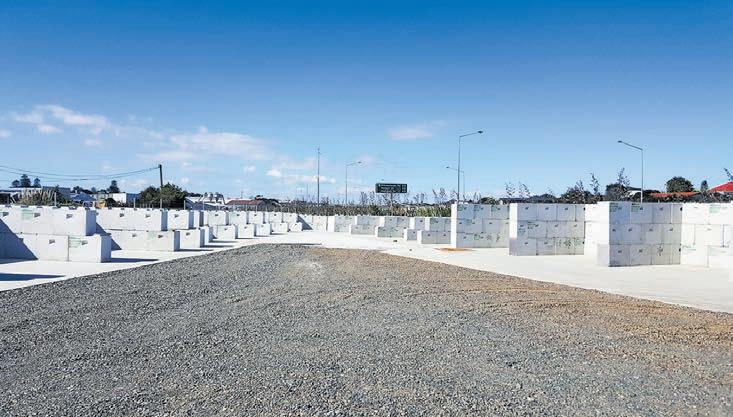
Controversial, confronting and critical of orthodoxy, New Mexico architect and designer Michael E Reynolds brought the concept of off-the-grid ‘radical sustainability’ into the spotlight, making the dream of eco-friendly housing more achievable for those who seek it. A pioneer of the style of homes which he calls earthships, Reynolds is also an advocate of recycling building materials and learning lessons from the ways in which other cultures approached living in extreme temperatures.
Michael Reynolds was born in 1945 and grew up in Kentucky, where his father introduced him to the concept of reusing building materials. He took this ethos a step further, publishing a university thesis on recycled building and crafting an entire house from used beer cans wired together into bricks and then covered with plaster. He also experimented with used tyres, which, when filled with earth, could become strong structural elements with a good thermal profile.
New Mexico, with its arid desert landscape, proved to be a perfect canvas for Reynolds and a test of his concepts. He took inspiration from the
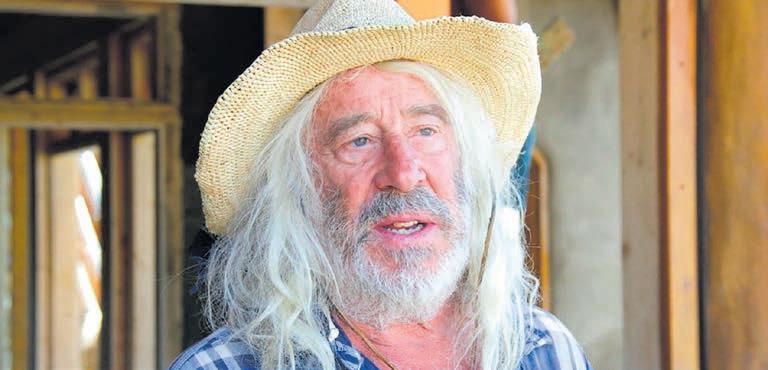
passive solar techniques developed by indigenous peoples in this environment, who had learned over centuries to build homes which remained cool in the hot daytime temperatures and warm in the desert nights. Adding his recycling ideas to these practicalities, Reynolds built two self-sufficient mini-communities, the Rural Earthship Alternative Community Habitat and the Social Transformation Alternative Republic.
Due to his unorthodox building methods, licensing was a problem.
Some of his early experiments failed, and officials made demands that he should adhere to stricter building codes. For a time, his more experimental houses had to be designated as ‘recycling areas’ or simply landfills, to get around state rules. Reynolds lost his licence as an architect for 17 years at one point, fighting in court for the right to innovate and test new theories in practice.

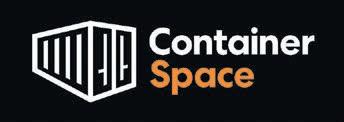


Reynolds describes one of his new homes, called the Phoenix: “There’s nothing coming into this house, no power lines, no gas lines, no sewage lines coming out, no water lines coming in, no energy being used.
“We’re sitting on 6,000 gallons (22,700 litres) of water, growing food, sewage internalised, 21 degrees year-round. What these kinds of houses are doing is taking every aspect of your life and putting it into your own hands. A family of four could totally survive here without having to go to the store.”
Services:
• Carpet & Upholstery Cleaning
• Carpet Repairs/Relays
• Carpet Assessor
• Curtain Cleaning
• Leather Cleaning, Repairs & Re-Colouring
Call Ross on 021 746 374
40 years of personal experience
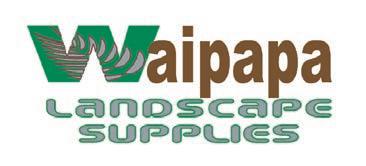



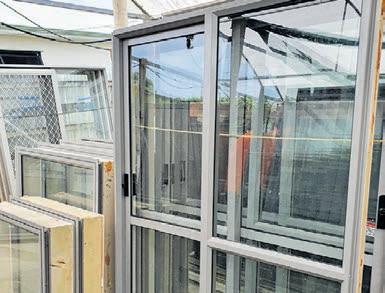

Solar power is growing in popularity, but panels remain costly and the amount of space they can cover is limited by their bulk. What if, instead, solar electricity could come from a coat of paint? One concept
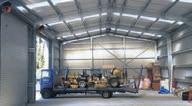

Supplied anywhere in New Zealand or the Pacific. We design and supply directly to you.
Over 25 years’ experience in the Steel framed building industry.
that could bring this dream to fruition would be ground-breaking enough, but scientists worldwide have created three.
The first comes from the Royal Melbourne Institute of Technology in Australia. It’s a kind of paint developing power from water vapour. Put simply, this thin layer of material absorbs moisture from the air and then uses solar-derived electricity to break it down into hydrogen and oxygen. As we have seen from hydrogen-powered cars, the most common element in the universe contains a lot of potential power.
“Our new development has a big range of advantages. There’s no need for clean or filtered water to feed the system. Any place that has water vapour in the air, even remote areas far from water, can produce fuel,” says RMIT’s lead researcher, Torben Daeneke.


New ways to generate energy from renewable sources are popping up everywhere, but three could change the landscape for homeowners in the near future.
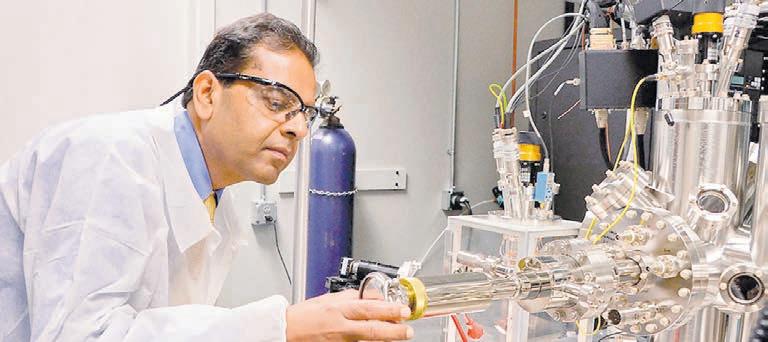
source of voltage at the same time could be within reach.



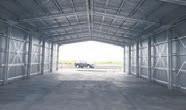

WEBSITE: www.steelspan.co.nz
EMAIL: info@steelspan.co.nz
PHONE: 0800 787 726


In Toronto, university researchers are banking on so-called quantum dot paint. This paint contains thousands of tiny, interconnected photovoltaic ‘dots’ which link together as a grid. By sheer coverage, they are 11 per cent more efficient than traditional solar panels, and as a bonus, the paint can be any colour you like. Giving your home a new look and a
“There are two advantages to colloidal quantum dots,” says dot creator Susanna Thon. “First, they’re much cheaper, so they reduce the cost of electricity generation measured in cost for each watt of power. The main advantage is that by simply changing the size of the quantum dot, you can change its light-absorption spectrum.”
In Sheffield, England, university scientists have worked out how to turn a Russian discovery from 1839 into
a modern power source. Perovskite materials were long thought to be a curiosity, but in 2014 British physicists worked out a way to turn these calciumtitanium oxide minerals into a liquid that operates like a solar cell. That has led to promising experiments with spray-on solar panel technology, including powergenerating paints.
It may not be long before your entire house and garage, or even the outside of your car, is a functional source of energy as well as a canvas for colour.
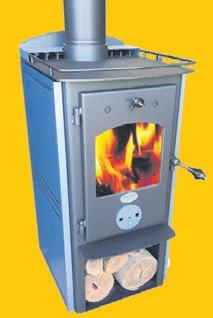

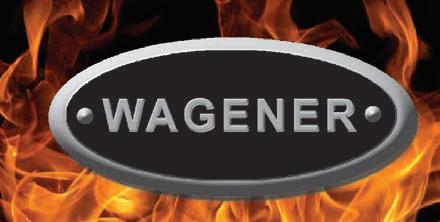


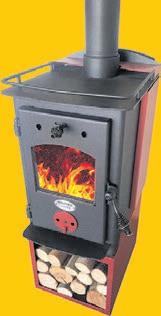

Dairy farmers around New Zealand are grabbing spades and heading onto their farms and into their communities to plant native trees and plants, creating a favourable habitat for birds and other wildlife to thrive.
Dairy farmers Andrew and Vicky Booth have been planting on the family farm for more than seven years, with more than 4,000 native trees and plants going into the ground yearly.
“Over the past three years, we’ve been seeing more native birds, including banded rail and kākā. It’s great to hear kākā squawking at each other,” Andrew says.
Farmers report seeing more native birds on their properties including tūī, kererū and kārearea (New Zealand falcon). In some cases, they’re seeing bird types they’ve never seen before.
While the farm has always had native bush, and the Booths have always seen kererū, tūī and other native birds, they’re providing even more shelter and security for wildlife.
“Planting has many benefits. Trees and plants alongside waterways create shade for fish, eels and insects, which helps them flourish. This includes enhancing native species such as Kiwi favourite whitebait and kanakana (fish that look like eels). Trees also provide shade for cows.
“Farmers throughout the country are involved in a wide range of environmental initiatives in their communities. They’re helping create nurseries to grow native trees and plants and working with schools to help children learn about nature.”
Andrew and Vicky host school groups on their farm so students can connect with nature.
“They help plant trees and learn about the difference native bush can make for the environment. It’s great for students to come back to the farm and see over time the positive change they have contributed to.
“Farmers nationwide are helping develop community facilities so people can get out in nature, including walkways near or on their farms.
“Our farmers are involved in a wide range of environmental initiatives in their communities.”
“They’re working with others to create ecological corridors to support native wildlife, including birds and bats. Some farms are close to urban areas and it’s great to see town and country people working together.”
Andrew is one of 400 environmentally focussed farmers in the Dairy Environment Leaders network, created by farmers, DairyNZ and the NZ Farm Environment Trust in 2007.
“The network aims to empower leadership and create opportunities to support and share on-farm actions to reduce environmental footprint.
“It’s important New Zealand gets the balance right between ensuring farm businesses can remain viable to continue contributing to local economies while meeting increasing community and consumer expectations around sustainability.
“We’re trapping pests, including possums, stoats and ferrets, and have created a wetland covering 1.5 hectares, with 5,500 trees planted around it.
“We’ve reduced our herd by 30 milking cows, from 430 cows to 400, and are breeding even better cows to reduce our herd size even further.
“We want farming to have as little impact on the environment as possible so we can continue to farm for generations to come, providing vital food and supporting local economies.”

Need GPS Guidance for Spraying or Spreading fertiliser?
With Entry level Kits from $3,995+GST plus Installation costs.
We have systems to suit your requirements.
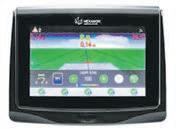



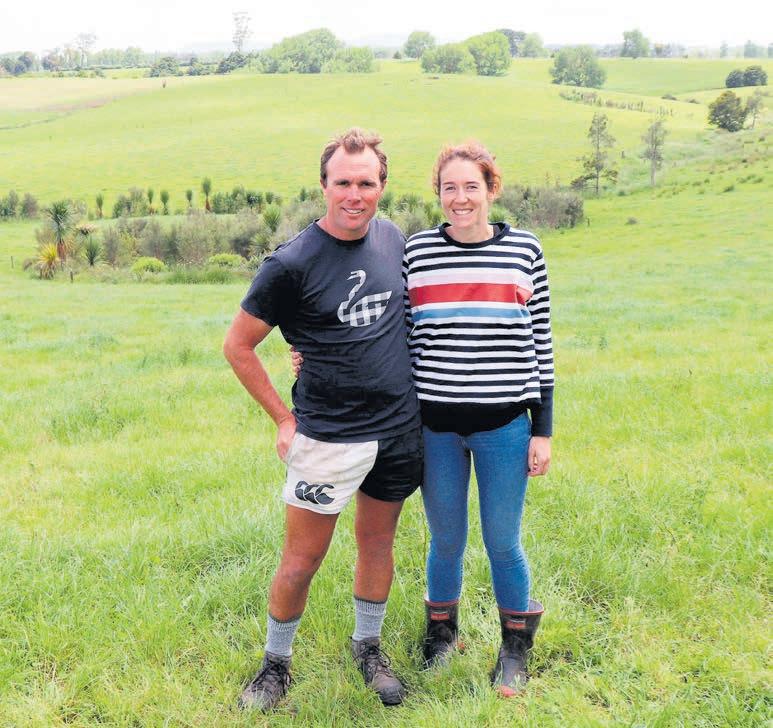






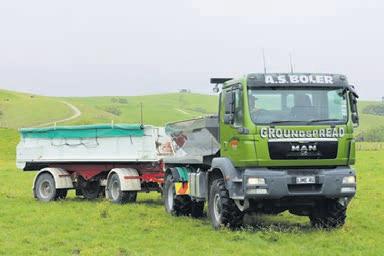
Buying a modern baler can be a very difficult decision, with technological advances in agricultural machinery providing the farmer or contractor with a dizzying range of options.
In the final assessment, most people who want to ‘make hay while the sun shines’ are concerned about three
things: bale quality, speed of operation, and the all-important issue of durability. When buying a car, there’s always the yardstick of racing to provide some kind of benchmark, and it’s no mistake that car companies believe that a win on the weekend means sales on Monday.
However, where can you see the top balers in the world of pasture performance go head to head, allowing farmers to assess their prowess? The answer comes from South Africa, where each year, top tractor drivers line up for the FarmSpace and King Price Baler Challenge.
The sometimes arid and challenging conditions of southern Africa mean that bales are big business there, and with New Zealand’s climate proving fickle in recent years, the same concerns are very valid here. When 13 balers took to the field at last year’s challenge, the Case IH RB 455 baler won the variable-chamber division, with the fixed-chamber RB 545 coming second in its own division.
What put the gold medal-winning 455 ahead? It wasn’t just a turn of speed but
Autumn is a great time to repair your lawn and with help from Newton’s it will be back looking its lushest best in a jiffy. Come to us for great prices and expert advice, talk to us now!

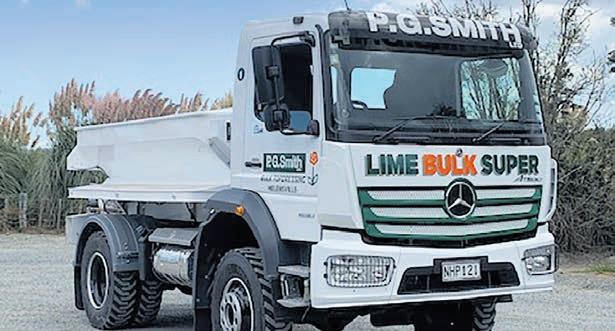


also came down to the clever way this baler can pack in more density and guarantee perfectly uniform bales over and over again. Four endless belts keep a firm grip on the bale as the 455 gets to work, keeping losses down, and the bale size can be altered and monitored in real-time from the comfort of the tractor cab. It is true of the larger 465 baler, too. Between them, these two machines offer versatility in the field and cover the PTO horsepower range from 60 to 105 and more.
A straight-out race down the rows determines a lot about a machine.

Still, the judges discovered that ease of maintenance was also a major factor in the design of Case IH’s offering. From a drop floor that makes it easy to clear any blockages to rotor cutter knives that can be switched out without the need for tools and wideopening side panels, quick and easy upkeep is a priority. Looking deeper, the durability of the belts, rollers and drive components has been optimised for heavy-duty work, and that will surely mean less downtime during the machine’s lifetime.
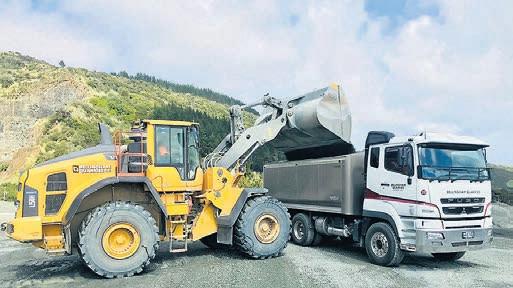

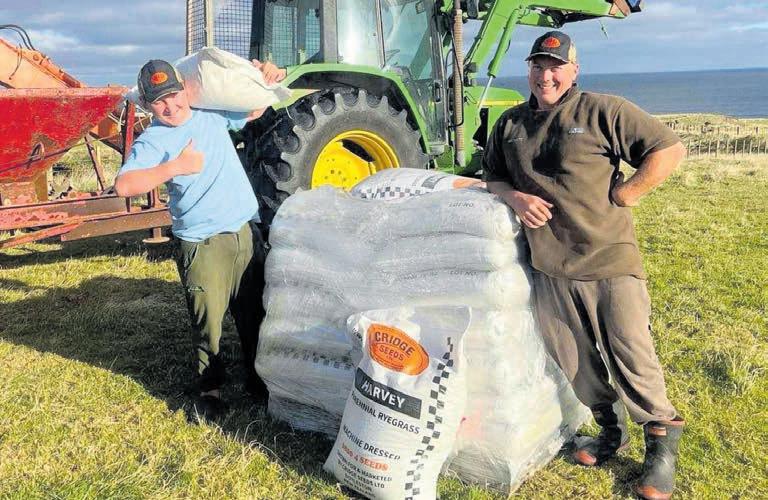


In dairy farming, managing autumn pasture means focussing on average pasture cover and cow condition to prepare for spring.
The DairyNZ website’s autumn management page details guidelines for achieving this through consistent postgrazing residuals, body condition scoring, autumn feed budgeting, pasture renewal and rotation length management.
Strategies for whole herd body condition, autumn feed budget considerations, pasture renewal and autumn pest control are important as is managing feed on the farm.
Following certain practices that improve persistence and quality in your pastures will help you reach average pasture cover and cow condition targets ready for spring.
Good grazing management through early autumn maximises the pasture you grow and utilise, balanced with allowing pastures to recover following any dry periods in the summer.
The secret to achieving good grazing is leaving consistent post-grazing residuals and graze pastures at the right time (two and a half to three leaves). Grazing ryegrass pastures too early reduces autumn growth and too late reduces quality.
Good management leads to improved persistence. Grazing at the two-and-ahalf to three-leaf stage. During May, the
rotation length may be extended beyond this to start building feed for winter.
If residuals are less than seven clicks/1,500 kg DM/ha, feed supplement to maintain herd intake and protect pasture. If there is no supplement available it is recommended to stand cows off pasture once they reach the target residual.
Successful autumn grazing involves knowledge of likely winter pasture growth rates for the farm from mid-May to midJuly relative to the likely feed demand over this period.
To plan autumn rotation targets correctly, you need to determine if winter feed demand is likely to be greater than or less than winter pasture growth.
If farm cover is below where it should be to meet target cover at calving, nitrogen fertiliser can be a great ‘circuit breaker’ to get growth back on track. Using a large part of the farm gives the best effect.
From early March, OAD milking and feeding the milkers supplements are not effective ways to gain BCS in earlycalving cows. To hit targets, cows need to be dried off based on their individual BCS, their approximate calving date, and the amount of supplementary feed available for autumn feeding.


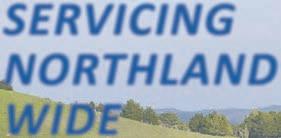
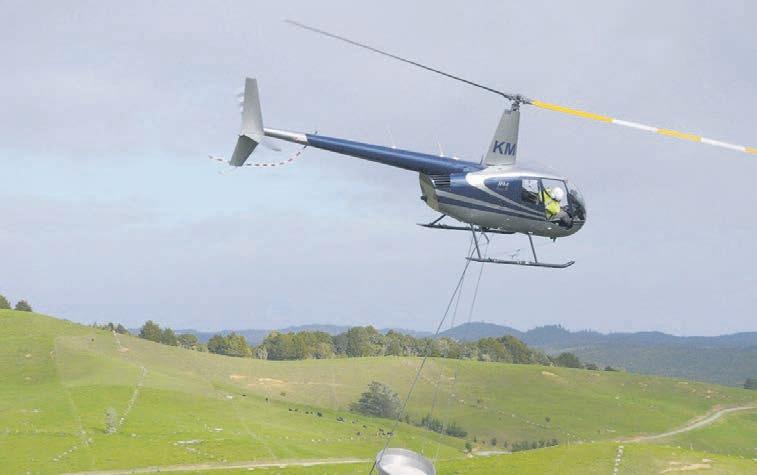
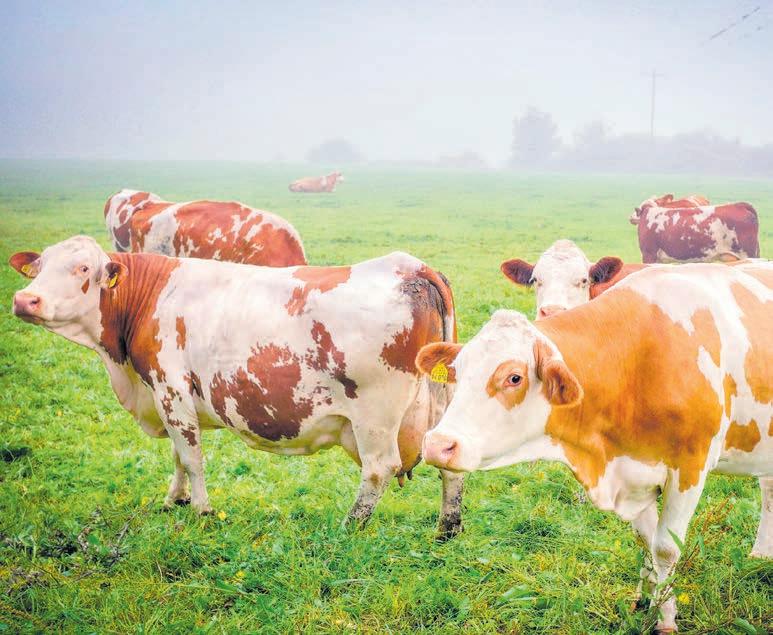
For later-calving cows, OAD milking and supplementary feeds can form a part of the strategy for BCS management. The time taken to gain the necessary BCS must be
considered. Particular attention must be paid to R2s and heifers finishing their first lactation.
For more information, go to the dairynz. co.nz — search autumn management.

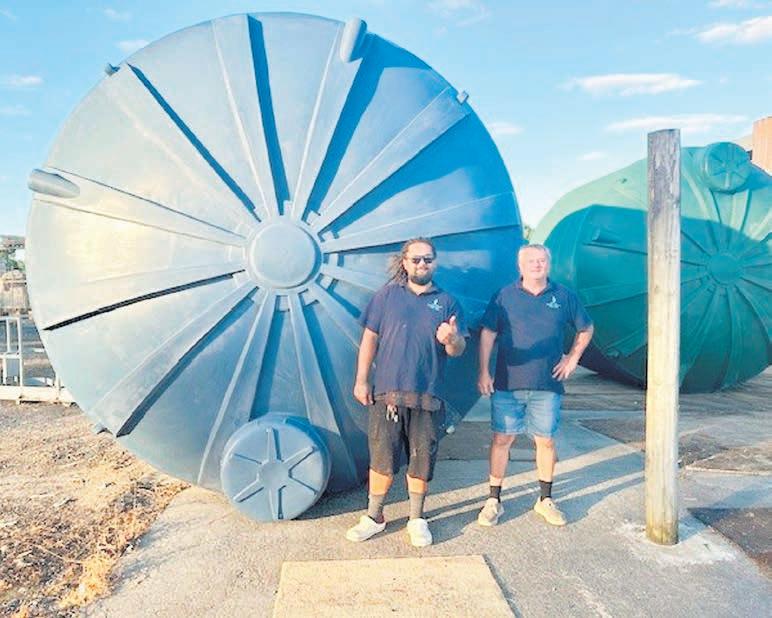




We’re proud to be locally owned and operated and believe in providing the highest standard of one-to-one service to all our customers from Dargaville, Whangarei, Kerikeri and beyond.
We have been in the tank business for 12 years, and have been manufacturing the 25,000-litre tanks for three years. For people living in a rural area, with no access to town water supply, we understand the impact of dry weather and we all know that water is an important part of life.
Having high-quality plastic water tanks to harvest rainwater off your roof is a great option. Our tanks are engineered to meet the AS/NZS 4766:2020 standards. The plastic polymer water tanks are lightweight, available in a range of colours, costeffective, durable and easy to install.

We manufacture 25,000L water tanks made on-site from durable polymer, and backed by a 20-year manufacturer’s guarantee.
TechTreat also design the CP2 Aerated Wastewater Treatment System and provide a supply, install and service for our customers.
“TechTreat also design the CP2 Aerated Wastewater Treatment System.”
failsafe, easy to install and hassle-free to maintain. We’re proud of the product we’ve developed and the service we provide our customers.
Our team of experienced and fully trained staff are passionate about providing service on a whole project basis, from the rst conversation to installation and future servicing.
When you buy a system from TechTreat, you can trust our product and our service. We offer our customers a backup service in the unlikely event that they experience problems.


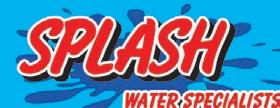

For more than a decade, we have made it our business to create an aerated wastewater treatment system that is
When you need a water tank or an advanced wastewater treatment system, contact the team at TechTreat today. We’re happy to answer any queries you have about our aerated wastewater treatment system, septic tanks or drainlaying services. Call us on 027 447 2322.

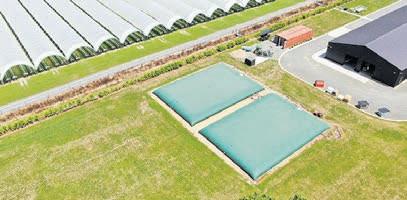
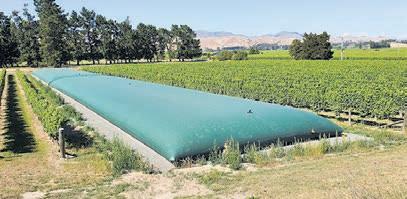



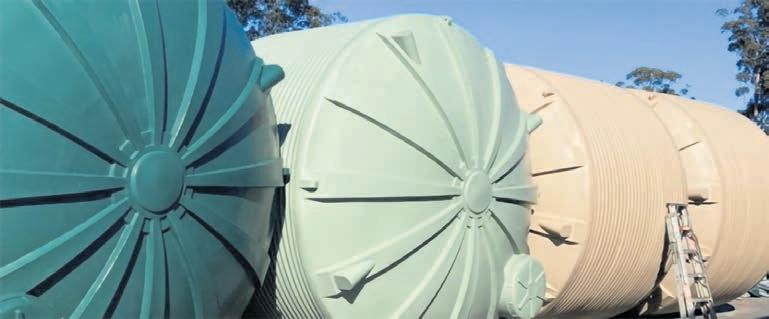
president
Many of you came to us to share your deep concerns about the Northland Regional Council’s Draft Fresh Water plan change — the NRC Fresh Water Management plan must be stopped.
Dear farmers and landowners,
Thanks to those who visited our stands at the Northland Field Days in Dargaville and to the organising team for putting on such an outstanding event.
As a passionate Northland farmer, I wish to draw this document to your attention and encourage everyone of you to respond to it as the submission deadline looms on March 31.
The NRC argues that there is no need for a cost analysis of this proposal, as required under Section 32 of the RMA, because it is only a proposal. I disagree and believe that by creating uncertainty it has placed unnecessary pressure on land owners.
The National Policy Statement on Freshwater has set some baselines, however councils are allowed to come up with their own, provided that they are not less than the National Policy Statement.
However, the NRC is proposing farmers must fence 10 metres on either side of waterways, an increase of 300 per cent
on the accepted three metres on either side. That creates immense fire risk and an environment for an explosion of weeds, which will clog our waterways.
The NRC Mission Statement is ‘Working together to create a healthy environment, strong economy and resilient communities’, meaning this draft plan does not meet their own criteria.
The NRC has also said there are around 250,000 hectares of hillsides covered in grass and currently used for grazing sheep, deer, and cattle that require stock exclusion in Northland. Northland currently has approximately 617,000ha of pasture cropping and horticulture, which would have a significant impact on the Northland economy.
This change will remove somewhere between $275 to 300 million annually out of the Northland economy. This is going to impact all the towns and communities across the region. As I have mentioned before, you could plant trees on those hills,
if you can afford to do so, but to harvest those trees you will need a consent and it is highly likely that you may not get a consent.
I urge all farmers and lifestyle block owners to submit in opposition to this
draft NRC Fresh Water management plan. Submissions are due by March 31.
Northland Provincial President of Federated Farmers of New Zealand.

NORTHLAND’S SEPTIC EXPERTS
> SEPTIC TANK CLEANING
> GREASE TRAP CLEANING
> PORTALOO CLEANING AND HIRE

Servicing the Bay Of Islands and wider Northland Region

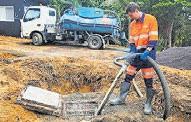
AVAILABLE 24 HOURS A DAY,



has been a drainlayer for around 20 years, following on from his father before him. Northland is his home and he has grown very well known in the area for his vast knowledge of his trade. Together, with his wife Karyn in the office, Leslie Drainage services anywhere between Wellsford through to Cape Reinga.
No job is too big or small and Richard loves to see a job completed properly. Skilled in all aspects of drainage – subdivisions/commercial, private domestic jobs, farms etc. Septic tank and water tank supply and installation and also custom drainage design. Whether you are building a brand new home, placing a relocatable on a section, adding a cabin, creating a subdivision, driveways, parking areas, landscaping, need a soakage field or just have problems with surface flooding on your backyard, you name it – we can do it.


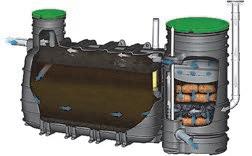



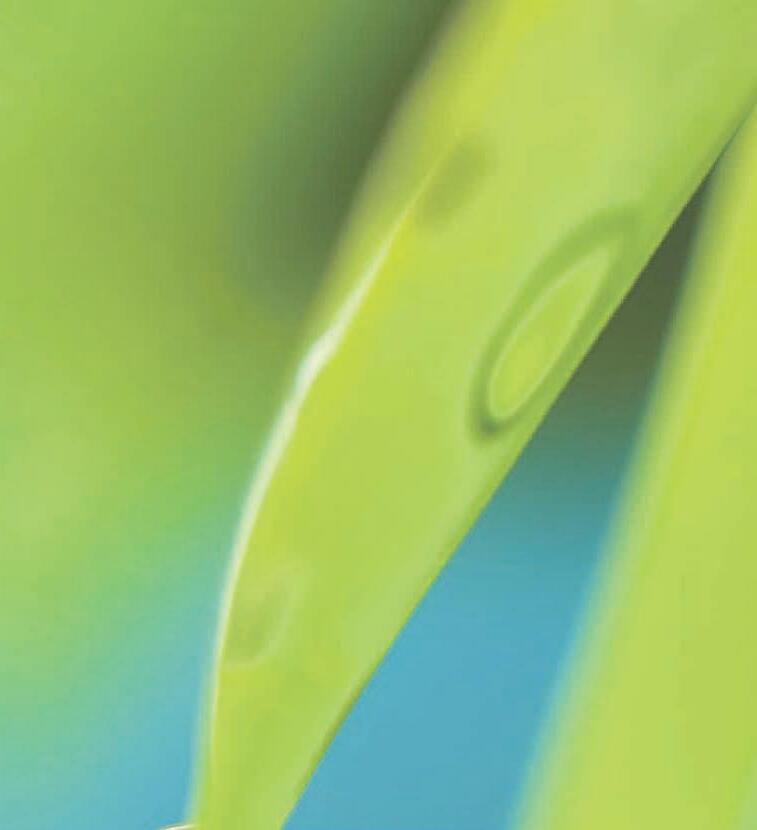

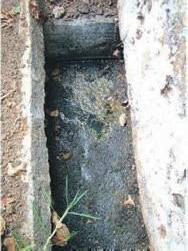
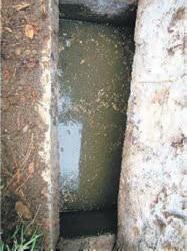




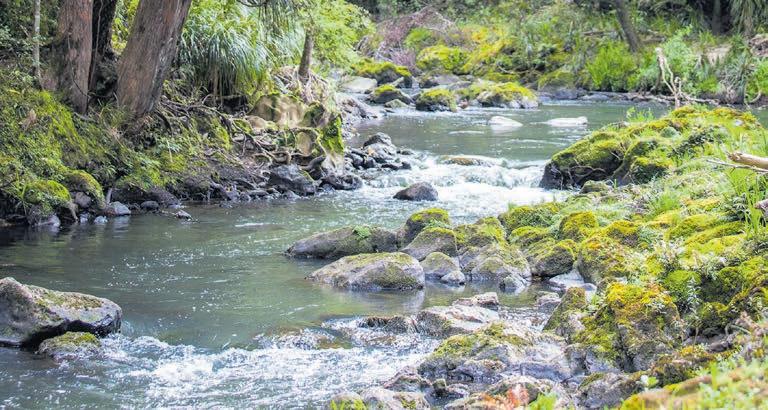


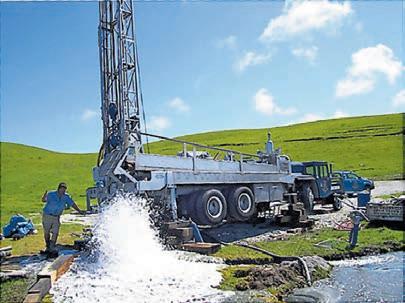
The Northland Regional Council proposes tighter rules for managing stock access to waterways and highly erodible land, and a policy that would set aside 20 per cent of unallocated water for environmental and cultural enhancement, among the changes being considered.
NRC chair Geoff Crawford acknowledged the changes being considered could have a big impact on landowners.
“It’s important for people to share their feedback to help us refine the plan so we come out with something that will work for our community as well as our waterways. The more feedback we get, the better informed our decisions will be,” he said.
Council deputy chair Tui Shortland said NRC was committed to work closely with tāngata whenua as it progressed the plan with responsibilities to protect freshwater.
“It’s important that our Freshwater Plan Change supports them to participate actively in freshwater management and decisionmaking. We’re keen to hear feedback on whether our draft achieves that.”
Chair Crawford said the decision to continue with the consultation made sense. “We have major challenges with our freshwater quality. We need a plan for improving the health of our water, and we need input from across the region to help shape the future management of freshwater in Northland,” he said.
The new government has extended the deadline for the council to release its proposed plan, the next phase of the process, from 2024 to 2027.
“We’ll be using the additional time to continue working to develop a balanced approach to freshwater management. This will make sure we are well placed to meet the new deadline and adapt to any future changes the government makes to national freshwater policy.”

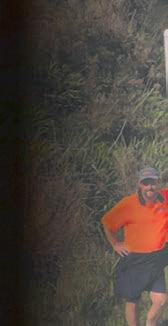



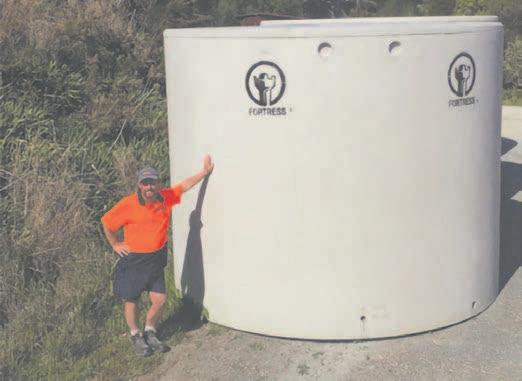







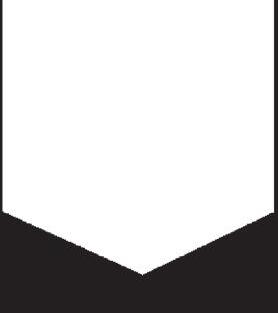



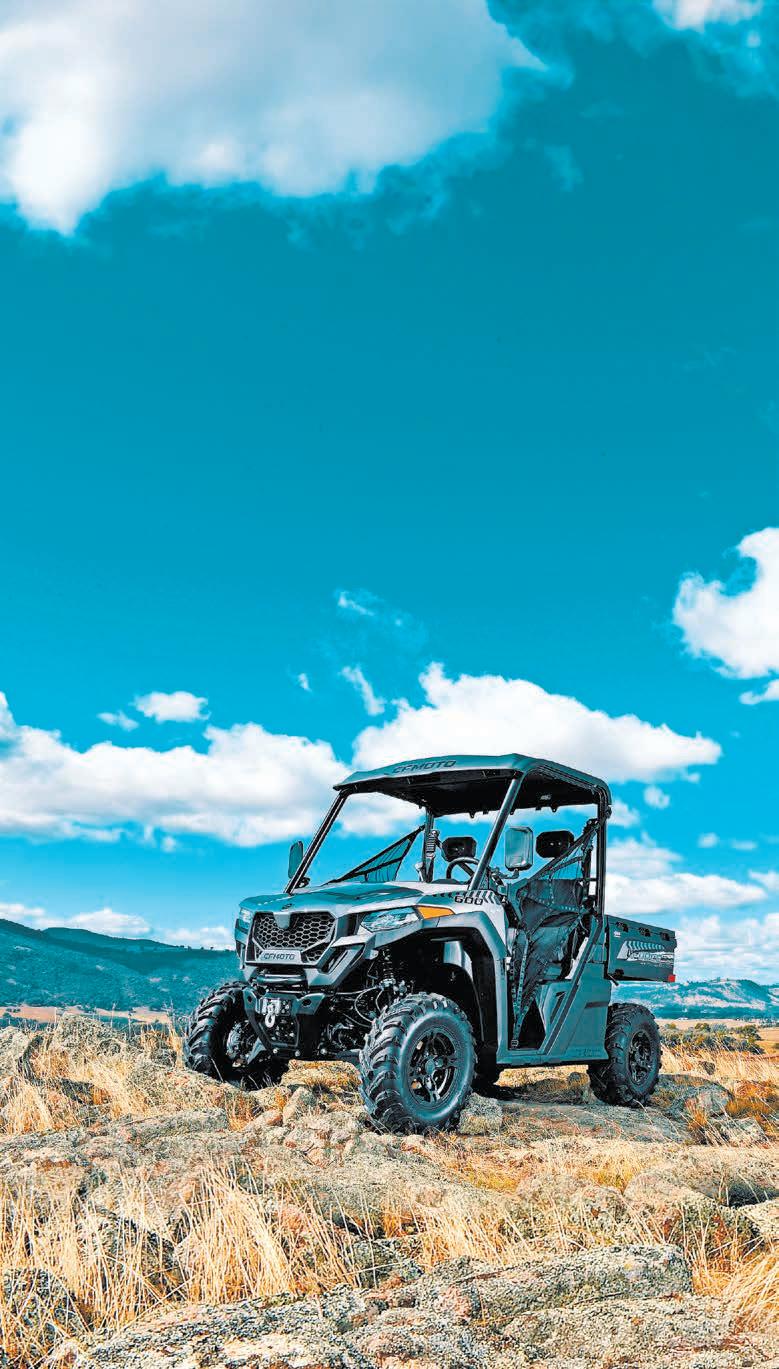



The new Volkswagen Amarok ute debuted last year with a reimagining of the German brand’s pickup truck offering, and critics were quick to praise its polished and refined evolution.
“The Volkswagen design team has delivered a practical ute with unique styling and driving traits, which customers will testify,” said Jarlath Sweeney, president and chairman of the prestigious International Pickup Award (IPUA) jury.
“This seventh running of the IPUA sees the new generation Amarok adding to the titles won in 2011 and again in 2017 with the upgraded version,” he said. Sweeney noted that the first and fourth top prizes in the award’s history also went to previous Amarok iterations.
There’s much to like about the Amarok, which has also added trophies from NZ4WD and Company Vehicle magazine to the VW cabinet. Drivers and award jurors cited the torque and smoothness of the ute’s drivetrain as a deciding factor. There are three engines to choose from, ranging from a two-litre unit boasting 405 Nm through to a twin-turbocharged version of the same delivering and even 500 Nm, and a big three-litre powerplant at the top of the range, generating 600 Nm of torque.
All of this power goes to the ground through a 10-speed shift-by-wire gearbox and Volkswagen’s consummate four-wheel drive technology, 4Motion. What this means in practical terms is
excellent grip and the ability to easily tow up to 3,500kg. As one would expect from a modern ute, there’s also a spacious tray and an improved, more spacious cab.
In a world of imitation off-roaders and crossover SUVs, the new Amarok is also notable for its real capabilities when the tarmac runs out. That aforementioned 4Motion system provides a good start, but other details have been attended to by VW engineers to ensure real offroad acuity. For example, while the wheelbase of the Amarok has grown by some 10cm, the body overhangs have been pared back to increase the ute’s ability to handle water crossings and big bumps. Chassis strength and ground clearance are up, too.
While other offerings in this very competitive sector are hardly spartan, the Amarok is also notable for its level of comfort. There’s a high level of electronic assistance and accessories combined to enhance the safety and enjoyment of a drive in VW’s new ute. The brochure claims that there are no less than 30 programs operating to keep you safe when you’re behind the wheel, but critics describe this full suite as unobtrusive. It’s not noticed unless it’s needed, and it’s quite intuitive.

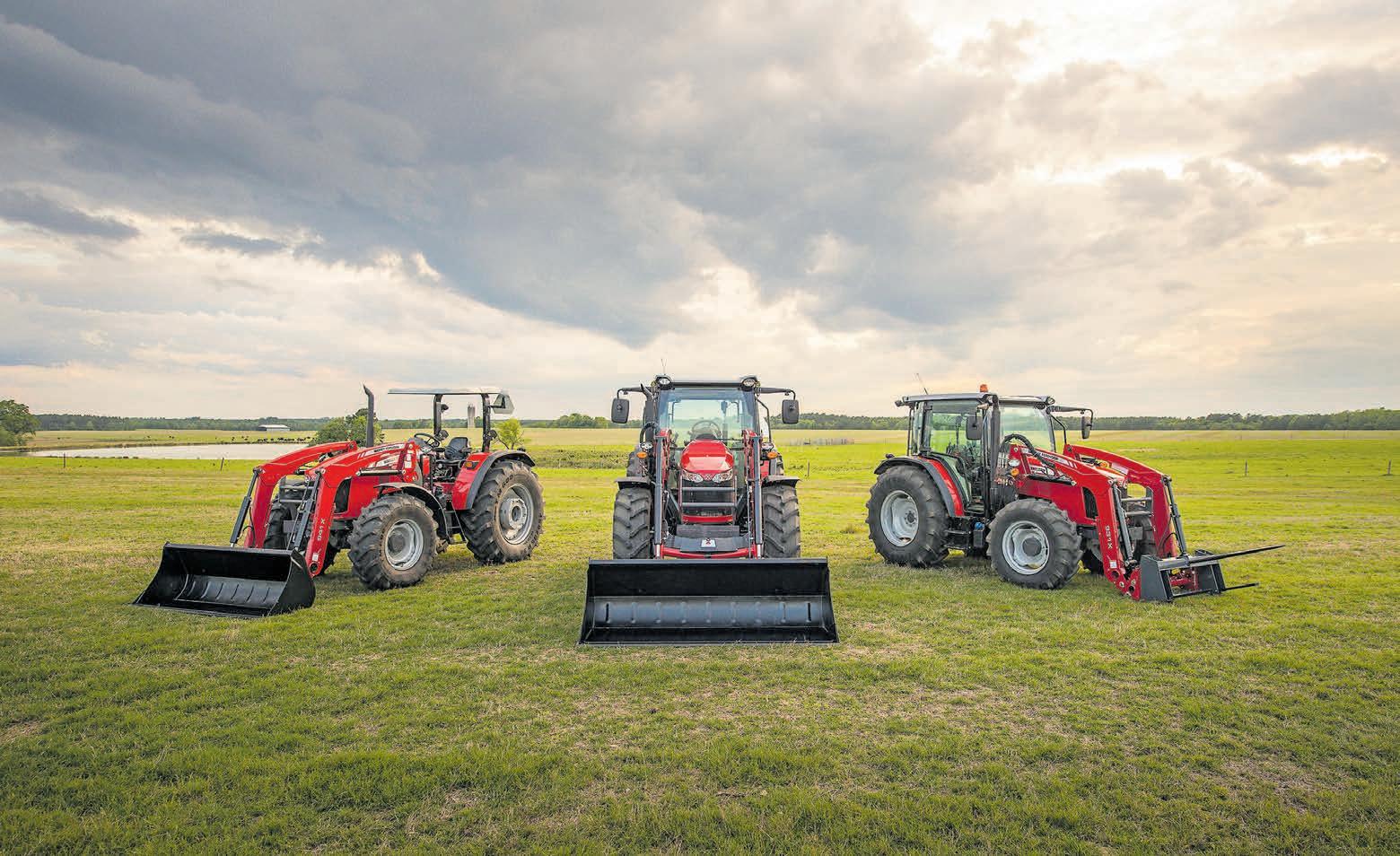


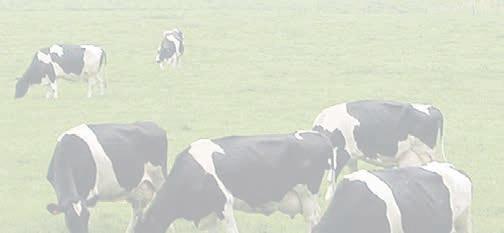






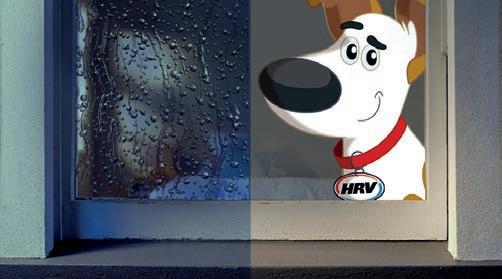






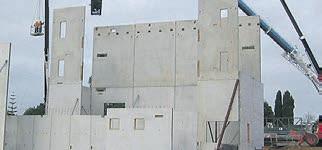


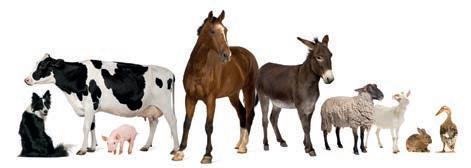







































Dargaville:

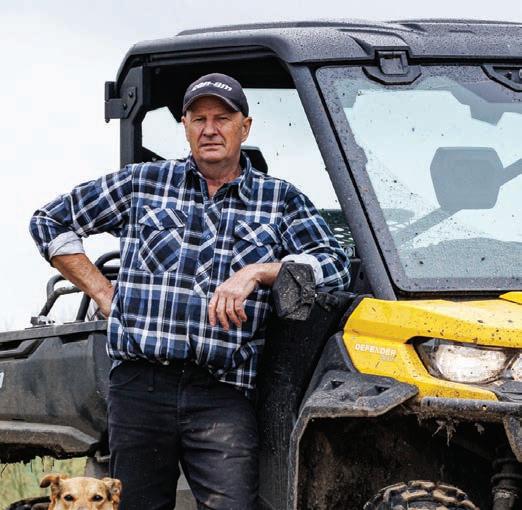






Hikurangi/Whangarei: Rouse
Kaitaia: Kaitaia
Warkworth:
Warkworth

